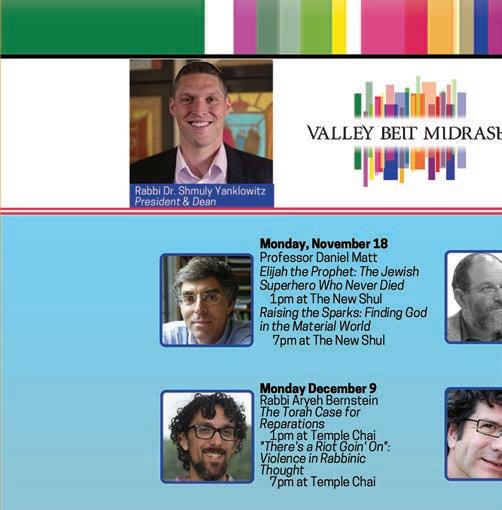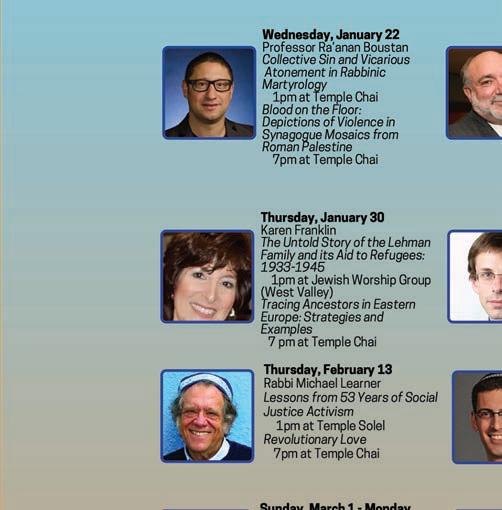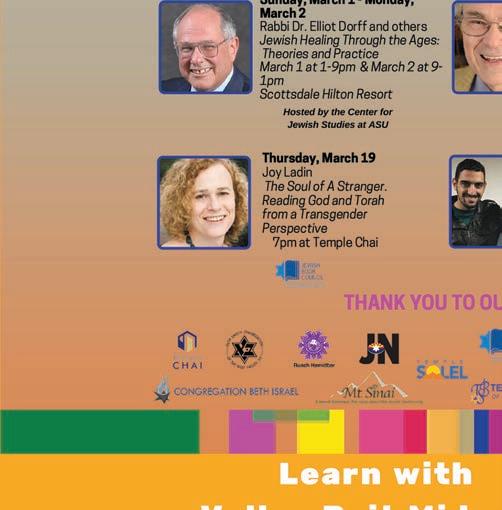HONORING VETS
Jewish War Veterans Post 619 throws a baby shower for pregnant servicewomen


Jewish War Veterans Post 619 throws a baby shower for pregnant servicewomen

ADL Arizona is gearing up for its annual Torch of Liberty Award ceremony, its flagship fundraising event to recognize and reward those who are doing the most good for the community.
“The Torch of Liberty is our annual event where we honor extraordinary individuals who exemplify the principles of the ADL,” said Carlos Galindo-Elvira, ADL Arizona regional director. “Many of the individuals who we honor have shown civic engagement, community involvement and a commitment to unite people of all races, religions and ethnic backgrounds.”
This year’s Torch of Liberty honoree is Ahron Cohen, the president and CEO of the Arizona Coyotes.
“Ahron possesses an incredible biography that really aligns and matches that of the ADL,” Galindo-Elvira said. “He’s such a nice person, and it’s been a pleasure working with him.”
“I’m incredibly honored and blessed to be receiving this award,” Cohen said. “I’ve known some of the people who’ve come before me and won this. They’re icons of this community and people I deeply respect, such as Jerry Colangelo, David Bodney, ASU President Michael Crow, the late Senator John McCain and the Arizona Diamondbacks CEO Derrick Hall.”
The Torch of Liberty Award, which is held every autumn, is deviating from its usual structure for 2019. According to

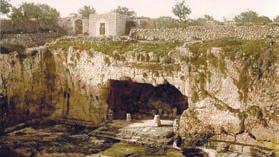
What's hot and what's not in the festive, harried realm of bar and bat mitzvahs in 2019

At Temple Chai, Rabbi Bonnie Koppell has helped families struggling with the threat of drug addiction, and she’s seen the tragic consequences of substance abuse.
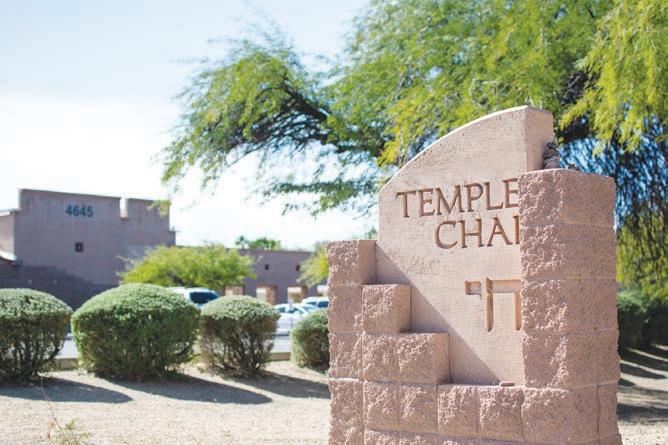
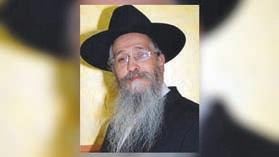
“We regularly, in our own little Temple Chai family, have had multiple losses from overdoses,” Koppell said. “I don’t imagine we’re the only ones.”
On Nov. 19, as part of its ongoing efforts to help people struggling with addiction, the Shalom Center at Temple Chai is partnering with the Jewish Addiction Awareness Network and Jewish Family &
When Mark Portnoy moved from Michigan to Arizona, he brought his taste for customized, boutique choclates with him. The owner of Gayle's Chocolates in Cottonwood, which opened in June, talks recipes and family business this this issue. Go to Page 16 for more. PHOTO BY
 JENNIFER MARSHALL | CONTRIBUTING WRITER
ELLEN O’BRIEN | STAFF WRITER
JENNIFER MARSHALL | CONTRIBUTING WRITER
ELLEN O’BRIEN | STAFF WRITER
Galindo-Elvira, “in order to lower the price point so more individuals in the community can afford to attend,” this year they have switched from a dinner to a breakfast. The Omni Scottsdale Resort & Spa at Montelucia will host this year’s gala breakfast and celebration on Nov. 22.


Cohen has been associated with the ADL for a number of years. In fact, both he and his wife participated in the ADL Glass Leadership Institute, which culminated in the two of them attending an ADL national convention together in Washington, D.C.
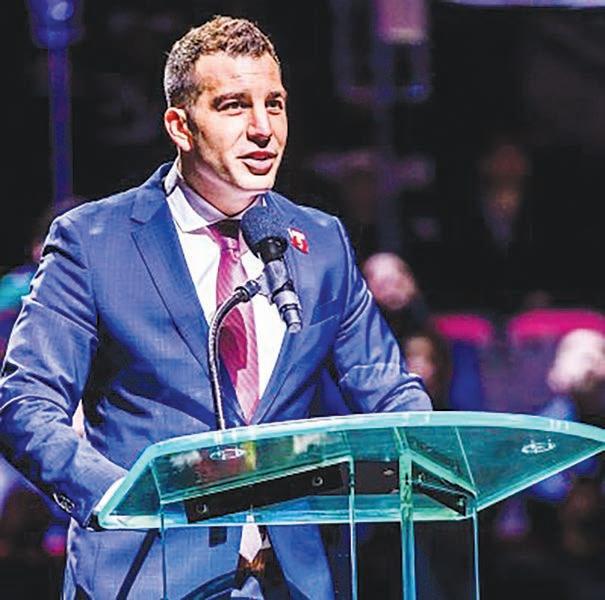


“GLI is a fantastic program in terms of immersing young leaders in the community,” Cohen said. “They learn what ADL does to address hate and how they
work to make the community a better place. GLI was a wonderful experience.”
That education helped Cohen identify ways for the Coyotes to get involved.
“From all that I have learned,” Cohen said, “one of the core initiatives I have established as CEO is to make sure this Coyotes organization is an integral part of this Arizona community. We’re going out, and we’re taking stances on matters that we see as important. We want to focus on doing right and doing good.”
This year’s Torch of Liberty theme is Burning Bright. Galindo-Elvira urges that with the growing support of the community, they can burn brighter and brighter.
“Anyone and everyone is welcome and encouraged to attend,” Galindo-Elvira said. “Buy a ticket online, and come learn about the ADL and the work we do in fighting bigotry, bias and bullying.
The proceeds from the Torch of Liberty Award event enable us to continue doing essential work like providing educational programming, responding to anti-Semitic incidents and working with law enforcement. These are our top priorities in Arizona. We also provide training to law enforcement on hate crimes as well as managing implicit bias.”
For Cohen, the award couldn’t be more meaningful. “When Carlos called me over the summer to tell me I’d been selected,” Cohen said. “I was incredibly happy and shocked. I didn’t see this coming at all, and I’m thankful to everyone associated with ADL for selecting me. I’ll remember this for a very long time.” JN
To participate in this year’s ADL Torch of Liberty festivities, visit web.cvent.com/event/ ce55c44f-d245-4b4b-9163-62297463db58.
4 January 11 January 18 January 25
February 1
February 8
February 15 February 22
7 June 21
July 12 August 9
August 30* September 6 September 13 September 20 September 27
4
18
1
15
6
13
20
EDITORIAL DIRECTOR | Liz Spikol

MANAGING EDITOR | Rich Solomon

STAFF WRITER | Ellen O'Brien
CONTRIBUTORS | Joel Zolondek

ADVERTISING SALES CONSULTANTS | Jodi Lipson

CIRCULATION | Bill Sims
GRAPHIC DESIGNER | Frank Wagner
Children’s Service to host two events on addiction, mental illness and recovery. The daytime program, “It Happens Here: Addiction and Mental Health Issues in the Jewish Community,” is directed toward educators, clergy and mental health professionals, while the evening program, “There Is No Them; There Is Only Us,” is free and open to members of the public.
With these events, JFCS Jewish Social Services Manager Kathy Rood said “We want to shine a light on addiction. We want the community to know that this is a disease just like cancer or diabetes, this affects the whole person. There is no shame in this whatsoever.”
The daytime program for educators and mental health professionals will be held from 9 a.m. to 2:30 p.m. at Temple Chai. Speakers will include Marla Kaufman, executive director of the Jewish Addiction Awareness Network; Jory Hanselman, director of BaMidbar Wilderness Therapy; and Rabbi Paul Steinberg, author of “Recovery, the 12 Steps and Jewish Spirituality.”
Koppel hopes attendees of the daytime program will come away more informed and feeling more connected with other professionals. “We want them, first of all, to understand the local and national statistics, local and national resources and Jewish perspectives,” Koppell said. “And also to form a community of professionals who work together to support each other as we support addicts and their families.”
The evening program, which starts at 6:30 p.m. and ends at 9 p.m., will include talks on Judaism and addiction, national and local resources for recovery, addiction statistics and personal experiences with addiction. The goal, Rood said, is not just to help people find practical resources, but also to raise awareness and “to let the community know that we are all here for one another.”
“There’s not one of us that doesn’t know someone that’s affected by addiction or mental health issues, not one of us,” Rood said. “So for us to know how we can best help friends and family … It’s a huge deal.”
knew that JAAN would be able to address concerns about addiction in her own local community.
According to Koppell and Rood, the shame and denial surrounding addiction makes it harder for addicts to seek treatment and find support in their community.
“Within the Jewish community, some people still believe that this is not a big problem, when in fact it touches the Jewish community just as much as any other segment of the population,” Rood said.

“There is a prevailing myth that Jews are not alcoholics or that Jews are not addicts,” Koppell added. “There’s a tremendous amount of shame that comes with addiction, which leads to a lack of awareness and a lack of treatment, and that has had tragic consequences.”
The program on Nov. 19 is part of the Shalom Center’s ongoing efforts to support recovery from addiction. The center also sponsors a local chapter of support group Jewish Alcoholics, Chemically Dependent Persons and Significant Others, which meets every first and third Wednesday at the Valley of the Sun Jewish Community Center.

“We do everything that we can at the Shalom Center to keep JACS going and just to maintain awareness in the community, to not shy away from talking about it,” Koppell said.
In addition to combating silence and shame around addiction, Koppell noted that there is a parallel concern about suicide in the community. Her congregation’s Yom Kippur service focused on breaking down the stigma around the word ‘suicide.’
“I think there is a lot of overlap of undertreatment of mental illness that leads both to problems with addiction and suicidal ideation,” Koppell said. “And we just have to be unafraid to say these words.”
Ultimately, Rood said, the goal of the two programs, “It Happens Here” and “There is No Them; There is Only Us,” is both to raise awareness and to let those struggling with addiction know that there is a community ready to help.

“It
Health Issues in the Jewish Community” is an event developed by the California-based Jewish Addiction Awareness Network. When Koppell heard about the program, she immediately
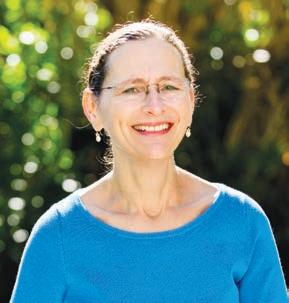
“We want them to know that they have a community that cares about them, that wants to envelop them and help them through the healing process,” Rood said. JN
For more information, or to register for the event, contact Kathy Rood at kathy.rood@jfcsaz.org or 602-452-4627.
There’s a lot to do at La Siena Senior Living Community —clubs, events, socializing, and more.

So, go ahead and make your want-to-do list. But please don’t include a bunch of chores. We’ll take care of most of those for you.
We invite you to see all that La Siena has to o er (including assisted living services if needed) at a complimentary lunch and tour. Please call now to schedule.
Wednesday, Nov. 20th • 3:00pm
Bring out the friends & family for a fun time! Enjoy delicious festival bites, games, musical performances & more. To RSVP, please call 602.635.2602.
A Jewish Cemetery that cares about the Jewish Community
• Jewish Owned and Operated
Independent & Assisted Living
909 E. Northern Avenue • Phoenix 602.635.2602
LaSienaSeniorLiving.com
• Sidewalks at Every Grave
• Jewish Owned and Operated


• Caring Professional Staff
• Paved Sidewalks Throughout –
• Intermarried Families Welcome
No Need to Ever Walk on a Grave
• Intermarried Families Welcome
On Monday, Nov. 11, we celebrated Veterans Day by honoring all the courageous individuals who have served our country. Yet while advances in military medical care have surged over the years, there is one group of veterans that often gets overlooked.
all over the state to attend these baby showers, and as more charities host showers for their cause, the baskets keep growing larger.
(480) 585-6060
• Beautiful Open-Air Pavilion for Services
• Caring and Professional Staff
24210 N. 68th Street, Phoenix (off Pinnacle Peak Rd) mtsinaicemetery.com
(480) 585-6060
www.mtsinaicemetery.com
e-mail: info@mtsinaicemetery.com
24210 N. 68th Street, Phoenix, AZ 85054 (off Pinnacle Peak Rd)
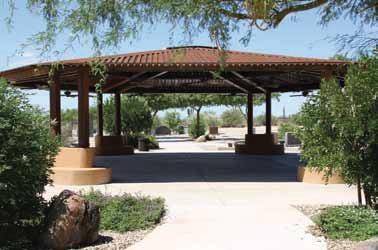
“If you ask people to donate supplies for veterans, you’ll receive men’s T-shirts, men’s socks and men’s underwear,” said Kathleen Laurier, a Navy veteran and co-founder of the VA Maternity Outreach for Moms (MOMS) program at the Phoenix VA. “People don’t stop to think that there are female veterans, too. In fact, in Arizona alone, we have over 60,000 female veterans.”
That is why Jewish War Veterans Post 619 is partnering with MOMS to host a baby shower for local pregnant veterans.
In 2007, while volunteering at the Phoenix VA hospital, Laurier and her sister, Barbara Klinedist, established MOMS to support pregnant veterans.
“The VA hospital program manager had a list of pregnant women,” Laurier said, “but since the Phoenix VA lacked a birthing center, the girls had been directed to other nearby hospitals. We were given this list and asked to check on them; thus, the tracking program was born.”
When the VA wanted to give some presents to the new mothers, the first baby baskets were created.
“The baskets were tiny, at first,” Laurier said, “so my sister and I subsidized them for a while. Then our Daughters of the American Revolution chapter held a baby shower to promote our mission. Soon other chapters were following suit with their own showers.”
Laurier and her sister have traveled
“Not all VA hospitals do the gift baskets,” Laurier said. “After my sister and I spoke at conferences in Cincinnati and Houston, respectively, several area hospitals in each city implemented them. Our goal is to establish the gifting program at every VA hospital.”
Laurier and Klinedist will both speak at the upcoming shower on Sunday, Nov. 17, which will be held in the Navajo Room at Sun Lakes Country Club in Chandler.
The idea for the event came out of a speaking engagement.
“We’re always promoting and helping veterans, so we invited Kathleen and Barbara to speak at one of our meetings,” said Nancy Stutman, co-membership chair of JWV Post 619. “Afterwards, I suggested we throw a baby shower, so this November will be our first ever MOMS shower.”
The MOMS organization coordinates with Veterans First to see that the baskets arrive safely at the VA hospitals where they are given to pregnant veterans during breastfeeding seminars.
“Veterans First caters exclusively to female veterans,” Stutman said. “In fact, it’s the only charitable organization that serves these women.”
The baby shower will start at 9:30 a.m. and feature treats like pastries, bagels and coffee. Admission is free, but Laurier and Klinedinst request that each attendee bring a new, unwrapped gift for future distribution to pregnant veterans.
When it comes to appropriate presents for Mom and baby, suggestions include baby clothes up to 12 months;
With so many things to do, we suggest getting an early start on your want-to-do list.


infant care items such as thermometers, hairbrushes and nail clippers; disposable diapers; bath towels and other bathing supplies; bottles and bottle accessories, like brushes; blankets; and children’s books.

New gifts for moms can include shampoo, conditioner, lotion, combs and brushes, flip-flops, slipper socks, nursing supplies, candles and bath supplies.





Laurier reports that with one third of new recruits being women, VA services are constantly expanding for female veterans.
“I’m in my 70s,” Laurier said, “and when I started going to the Phoenix VA, they didn’t have a mammography department. Today, they have one of the most high-tech and top-notch facilities in the U.S.
“Hopefully, one day soon we’ll have a birthing center, too. In the meantime, I’m just so proud of the girls who are serving their country and making a valuable difference every day.” JN
Alzheimer’s & Dementia Care is now available here! And that includes brand new apartments with plenty of amenities, such as restaurant-style dining, housekeeping, laundry and concierge services, plus personalized care and support. Come experience firsthand how easy it is to get more out of life here.
“A
Huffington Post
An outrageous evening of jokes, skits, songs, one-liners, double-entendres, and hysterical routines that pays tribute to & reinvents classic jokes of the past & present. Like rye bread, kosher pickles & bagels, this show is for everyone! You’ll laugh ‘til you plotz.

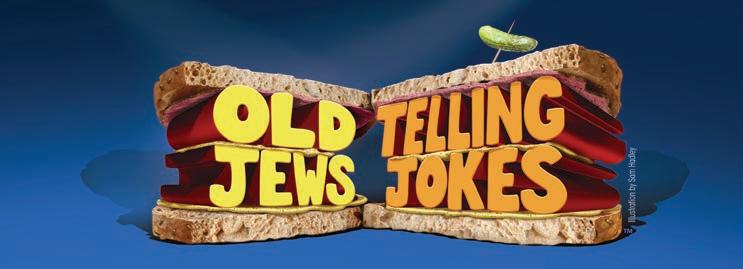
Stefan Schlüter’s mission for the past 30 years has been to improve the relationship between Germany and Jews around the world. That mission came from his time serving in the German Federal Foreign Office from 1979 until 2017.
visited 12 U.S. cities in the Midwest and Southeast. During the trip he engaged with more than 1,200 attendants. Last year’s tour was in collaboration with the American Council on Germany and the American Jewish Committee.
WARNING: Adult (Bawdy) Humor! For Audiences 18+
222 E. Monroe, Phoenix, AZ 85004
Tickets: 602-252-8497
Groups (12+): 1-888-264-1788
PlayhouseInfo.com

“You can only do so much in explaining what has been done in Germany since the Holocaust,” Schlüter said. “You can only do so much explaining of what contemporary Jewish life is in Germany right now. People have to see it for their selves and the next best thing from going to Germany is being in contact with a German who can convey what the country is about.”
Schlüter visited Phoenix as a part of a seven city U.S. tour to discuss how Germany faced its past and the rise of nationalism and populism in Germany and Europe. The Jewish Community Relations Council of Greater Phoenix hosted the former diplomat at the Valley of the Sun JCC on Wednesday, Oct. 30.
The JCRC’s executive director, Paul Rockower, said that the organization was honored to host Schlüter.
“This program offered a powerful opportunity to learn more about the specter of rising anti-Semitism and populism both in Germany and throughout Europe,” Rockower said. “Herr Schlüter has demonstrated throughout his career that he truly values engagement and dialogue with Jewish communities all over the world.”
During his time as a diplomat, Schlüter worked in several embassies. From 1986-1990 he served as the spokesman of the German Embassy in Tel Aviv. He then served as Deputy Consul General in Los Angeles in the early ‘90s and in the same role in New York City in the early 2000s. In 2014, he was the Consul General in San Francisco. After leaving the German Foreign Service he began working at the German Foreign Office’s Diplomatic Academy in Berlin.
While working in those roles, the former diplomat engaged with several different synagogues and Jewish organizations about Germany’s post-Holocaust relationship with the Jewish people. He even scheduled several trips to Germany for North American rabbis.
This second U.S. tour was made with the same purpose. In October 2018, Schlüter

Although this current tour is not sponsored by the ACG and the AJC again, German company Allianz SE and the World Affairs Councils of America are supporting it.
Schlüter described some of the policies that Germany enacted to combat anti-Semitism and what America should be paying attention to as a nation.
“Under the pretend umbrella of the First Amendment, there’s a lot more freedom to express anti-Semitic views than there would be in Germany,” Schlüter said. “It is illegal to deny the Holocaust in Germany, for example.”
He added that the U.S. has to pay attention to the early warning signs of what antiSemitism looks like and how it grows.
His U.S. tour comes shortly after the tragic synagogue shooting in Halle, Germany, on Yom Kippur that resulted in the deaths of two bystanders. Schlüter, who was at his home in Hamburg at the time, was shocked and saddened to hear what had happened.
“We’re making a lot of progress in Germany and I think it has become a great place for Jews to live,” Schlüter said. “However, it’s sad that we have to say that. It really breaks my heart that there has to be a police presence at most synagogues now. I don’t see it as much in Germany, but I see it all the time here.”
But even in dark times, Schlüter said that he felt hopeful about the future for the relationship between Jews and Germany. He believes that the actions of Germany during the Holocaust compel him, as well as others, to address the country’s history and to improve the relations.
His presence in Phoenix was an opportunity to create a stronger understanding and Rockower was grateful for his appearance.
“This type of people-to-people exchange is vital for our community to help us better understand the complicated historical dynamics of the German-Jewish relationship, and offers context to understand the trends that the Global Jewish community faces,” Rockower said. JN

 NICK ENQUIST | STAFF WRITER
NICK ENQUIST | STAFF WRITER

The Jewish Federation of Greater Phoenix’s Business & Professionals group will present Spotlight, a networking event featuring the star of Bravo network’s “Million Dollar Listing Los Angeles,” Josh Flagg.


Spotlight will be held at Congregation Beth Tefillah on Wednesday, Nov. 20. This event is part of the Business & Professionals’ mission to strengthen relationships among Jewish professionals through education, networking and communal engagement.



“We are delighted to welcome Josh Flagg to Phoenix for Federation’s inaugural Business and Professional’s Spotlight,” said Marty Haberer, the president and CEO of the Jewish Federation of Greater Phoenix. “We look forward to hearing how lessons from his grandmother have shaped his life and career in real estate.”
Josh Flagg, who is Jewish, has been one of the hosts and real estate agents of “Million Dollar Listing Los Angeles” since the show debuted in 2006. The show follows Flagg and other real estate agents as they sell high-end properties. It also gives viewers an inside look at the world of high-priced real estate in Los Angeles County.
The reality TV star began his career at the age of 18. He was named in Forbes’ 30 Under 30 in 2012. He regularly appears as a real estate expert in the pages of The Wall Street Journal, Los Angeles Times, Forbes Magazine and Variety.

In addition to discussing real estate and providing a network opportunity, Flagg will also be talking about his Jewish upbringing and his grandmother, Edith Flagg.

His grandmother was born in Austria in 1919, and at the age of 15 she was busy studying fashion in Vienna. She eventu-



ally fled Austria and spied on the Nazis for the Dutch underground resistance. After the war, she immigrated to Palestine and then moved to America where she became one of the leading fashion designers of her day.
Josh Flagg honored his grandmother by writing “A Simple Girl: Stories My Grandmother Told Me,” a book written from her perspective as if she were telling stories to the reader.
“I know my grandmother’s tone because I grew up with her,” Josh Flagg said. “I just talk off the cuff the way she would talk to me. I heard these stories so many times that what’s written is pretty much exactly what she would say.”
He starting writing the book at the age of 14 and he was able to write it through

audio recordings he had with her. The book was first published in 2004 and attendants of the Spotlight event will receive signed copies.
Josh Flagg is answering questions from the audience and will be available for a dessert reception after the event. JN
Visit jewishphoenix.org/spotlight2019 for more information.











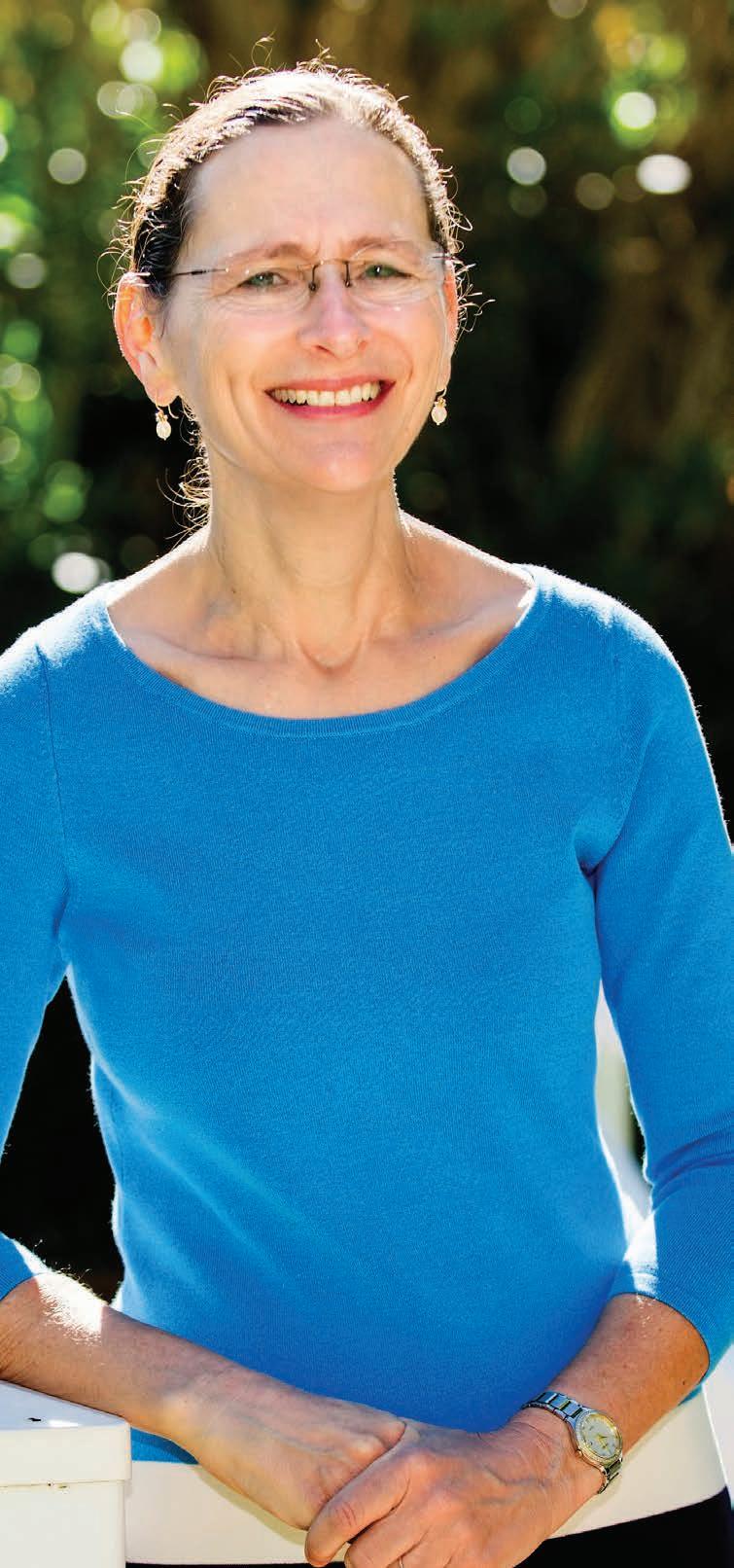
The first residents of Trump Heights in the Golan — several hundred teenagers from troubled homes — arrived in the settlement on Nov. 7, JTA reported.
A boarding school for underprivileged youths in Israel designed to prepare teens for service in the Israel Defense forces debuted that day.
The Golan Heights, which Israel seized in 1967 from Syria, was recognized by the United States in March, and Israeli Prime Minister Benjamin Netanyahu named the town in gratitude after President Donald Trump. It is the second Israeli town named after an American president, the first being Kfar Truman


About 20 families are slated to move to Trump Heights next summer.
A Ministry of Tourism plan for a cable car from the old Jerusalem railway station to Jerusalem’s Western Wall was approved Nov. 11 by the Housing Cabinet, Globes reported. The cable car will have 73 cars, travel more than 1.4 kilometers and have the capacity to
transport 3,000 people in each direction.
The project is designed to provide easier access to the Western Wall and the Old City’s southern side while easing Old City pedestrian congestion. The Ministry of Tourism estimates 135,000 people visit the Old City weekly.
“The Western Wall is not currently accessible enough to the public at large. For 2,000 years we waited for the Western Wall and it shouldn’t be that crowding and congestion will prevent people from reaching the Western Wall to pray, stroll around and take part in military and national ceremonies,” Minister of Finance Moshe Kahlon said.
The cable car’s route will take it above Bible Hill (Givat Hatanakh) and the Valley of Gehenna, skirt the Diaspora Yeshiva on Mount Zion and the Church of St. Peter in Gallicantu and above the Ein Hilweh neighborhood before ending near the Western Wall.
Several turtles were found in a park outside Seattle with swastikas painted on their shells — and they’re proving difficult for local
animal control officers to catch, JTA reported.

Local TV station KIRO said federal help was called in help catch the turtles at Gene Coulon Memorial Beach Park. The swastikas apparently were painted in the wrong direction.
The park was host to a rally against hate on Nov. 9.
“This inhumane and offensive act has no place in our community,” according to a tweet from the local office of the AntiDefamation League.
Democrat Eileen Filler-Corn, 55, of Fairfax County, Virginia, was chosen as speaker by the Virginia House’s incoming Democrats on Nov. 9, making her both the first female and first Jewish speaker in the state’s history, JTA reported.
Filler-Corn, who is the minority leader, has served in the state General Assembly since 2010.
“The firsts are not lost on me — the first woman and the first Jewish person elected Speaker-designee in our 400-year legislative history — but it doesn’t define me. When I joined this body less than 10 years ago, I
was the only mom serving with school-aged kids,” Filler-Corn said in a statement. “We have come so far since then. We have the most diverse House Caucus in our history, which includes cultural, gender and geographic diversity.”
Democrats won a majority in the state house on Nov. 5, the first time in 20 years.
Filler-Corn serves on Washington region’s American Jewish Committee chapter board of directors.
Four sentenced in death of Ukrainian rabbi
Four people were sentenced to prison for the 2016 fatal assault and robbery of ChabadLubavitch Rabbi Menachem Mendel Deitsch in Zhytomyr, Ukraine, JNS.org reported.
Two Ukrainian men received sentences of nine and 11 years in prison, respectively, while two women, who were minors at the time, received seven, according to anash.org.
Deitsch, who was a longtime Chabad emissary to France and Israel, was assaulted and robbed at Zhytomyr’s train station on Oct. 7, 2016. He suffered brain trauma and, despite surgery and a transfer to Israeli hospitals, never regained consciousness before dying April 15, 2017 in Jerusalem. JN

For 50 years, Sh’ma was a journal that asked questions and promoted discussion about Judaism and the Jewish world, exploring ideas that challenged conventional, mainstream Jewish thinking. When it was announced last week that the next issue of the publication — which migrated in recent years from print to the web — will be its last, it prompted the continuation of an important conversation about the marketplace of ideas and thought within the Jewish community. The journal’s backers at the Lippman Kanfer Foundation for Living Torah explained their decision to pull the plug this way: “At the foundation, we asked ourselves whether our support for the journal was commensurate with our spending: Was the journal reaching enough readers — or enough thought leaders — to have the kind of impact on the communal discourse we sought to have? We have tried to meet the challenges of a changing readership, most
recently partnering with the Forward, in the hopes of increasing distribution. Unfortunately, despite investing significant resources and effort, Sh’ma struggled to transcend its original print format and attract new readers in today’s digital world.”
That very frank assessment tells you
Sh’ma was launched in 1970 by theologian and educator Rabbi Eugene B. Borowitz. True to its time, it reflected the generational change in Jewish life brought on by baby boomers — a rising population of post-immigration, postYiddish Jews. It marked the intellectual rise of the liberal Jewish center, an open,
JOURNALS OF IDEAS TEND TO REACH A SMALL AUDIENCE, ARE FINANCIALLY FRAGILE AND ARE MORE AKIN TO A LABOR OF LOVE THAN THEY ARE TO A BUSINESS.
much of what you need to know about the state of journalism generally, and the delicate state of Jewish journalism, in particular. It also recognizes that journals of ideas tend to reach a small audience, are financially fragile and are more akin to a labor of love than they are to a business.
multidenominational approach that brought together Jewish thinkers from across the religious spectrum for thoughtful, pluralistic conversations that were of particular interest to an expanding and intellectually curious post-World War II Jewish community. It had a good run.
The Jewish Chronicle in London (the leading Jewish newspaper in the UK) had an unusual front page last week. Atop the page was a bold banner headline: “To all our fellow British citizens,” followed by a sub-headline which read “This front page is addressed not to our usual readers — but to those who would not normally read the Jewish Chronicle. In other words, non-Jews.”
What followed was an impassioned plea: Don’t vote for Labour Party leader Jeremy Corbyn in next month’s election, as he is considered an anti-Semite by “the vast majority of British Jews.”
The article went on to recount Corbyn’s long history of anti-Semitism and hostility to Israel, including: “He has described organisations like Hamas, whose founding charter commits it to the extermination of every Jew on the planet, as his ‘friends’. He has laid a wreath to honour terrorists who have murdered Jews. He has insulted ‘Zionists’ — the
word used by antisemites when they mean ‘Jew’ because they think it allows them to get away with it — as lacking understanding of ‘English irony’.”
And then the Chronicle made its request: “Putting oneself in the shoes of another person, or another group, can
to be a British Jew at a time when the official opposition is led by a man widely held to be an anti-Semite.”
In Britain’s parliamentary system, Corbyn will become prime minister if Labour wins a majority in Parliament, or forges an Israel-like coalition with
WITH CORBYN AS PRIME MINISTER, MANY JEWS WORRY THAT LIFE IN BRITAIN WILL BECOME INTOLERABLE.
be difficult. But we believe it is important — and urgent — that you do that. Perhaps the fact that nearly half (47%) of the Jewish community said … that they would ‘seriously consider’ emigrating if Mr Corbyn wins on December 12 will give you an indication of what it feels like
smaller parties. But if Corbyn loses the vote of constituents in his north London district, he won’t make it to Parliament. That seems to be what the Chronicle is trying to accomplish.
Even without Corbyn, however, Labour has a serious anti-Semitism
But now we are experiencing the next new Jewish wave — a post-print generation dominated by young Jews who don’t subscribe to a particular Jewish movement or institution, many of whom have one Jewish parent, and who are struggling with a new set of issues. They will undoubtedly create their own publications, their own labors of love, to debate the questions of their age.
“Perhaps [Sh’ma’s] ending serves as a metaphor not for American Jewish failure, but for American Jewish success,” said Rabbi Jeffrey Salkin, senior rabbi of Temple Solel in Hollywood, Florida. “It lasted as long as it could have, and as long as it should have. It did not die until it had spawned intellectual and spiritual children and grandchildren.”
We look forward to the growth of new and exciting outlets for the continuing exchange of Jewish thought and wisdom, and are thankful for the 50 years of inspiration from Sh’ma and its contributors.
problem. It has become a “safe space for those with vile attitudes towards Jewish people,” a British parliamentary committee of inquiry found in 2016. And, by most accounts, things haven’t gotten better.
With Corbyn as prime minister, many Jews worry that life in Britain will become intolerable. The worry is compounded by some degree of confused shock, as Labour has historically been the natural political home for most British Jews. And with the opposition Conservative Party crumbling over its protracted and inept handling of Brexit, many British Jews worry that they have no political home.
The Chronicle piece chose not to enter the broader political debate, and kept its focus on the issue of anti-Semitism, with a singular objective. “We believe that the overwhelming majority of British people abhor racism. We ask only that, when you cast your vote, you act on that.”
Kol HaKavod JNCan you name three concentration or death camps?
Most adults, especially Jews, can name three without thinking too hard — Auschwitz-Birkenau, Dachau, BergenBelsen, Buchenwald, Terezin, Sobibor, Ravensbrück, Majdanek, Treblinka or many others.
Now, can you name three sites of mass execution of Jews murdered by bullets during WWII?
Stumped? You are not alone. Yet, there were over 2,600 such places where over 2 million Jews and others were murdered in genocide by mass shooting. Before there were gas chambers, the Einsatzgruppen — roving Nazi death squads — went to the victims who were massacred in their villages, small towns and large cities. ey were killed in front of their neighbors. While examples are plentiful, here are just a few.
• 23,600 Jews — men, women and children — mostly originating from Hungary were exterminated near the town of Kamenets-Podolski in August 1941.
• In Kiev, on Sept. 29-30, 1941, nearly the entire Jewish population of the city
taken in 93 horse-drawn carts to pits where they were shot in September 1942.
SARNY WAS THE TOWN WHERE MY MOTHER GREW UP AND WHERE MY GRANDFATHER, GREAT-GRANDPARENTS AND OTHER FAMILY MEMBERS WERE SYSTEMATICALLY EXECUTED INTO RAVINES WHERE MASSIVE PITS HAD BEEN PREPARED.
was shot at the edge of the Babi Yar ravine.
• Between Christmas and the New Year of 1941-1942, about 50,000 Jews from Odessa and neighboring region were killed in Bogdanovka.
• 300 people in Zablocie, Belarus were
• Between 14,000 and 18,000 Jews were killed Aug. 27-28, 1942, in Sarny, Ukraine. Sarny was the town where my mother grew up and where my grandfather, greatgrandparents and other family members were systematically executed into ravines
where massive pits had been prepared. The Phoenix Holocaust Association is leading a community-wide education program to reveal a chapter of history that has remained silent for far too long. Holocaust by Bullets is a program of Yahad-In Unum (Together In One), a global humanitarian organization dedicated to discovering genocidal practices around the world, providing documented proof of crimes against humanity. It is a leading voice of protest on behalf of past and present victims of mass murder. Founded in Paris by Father Patrick Desbois, Yahad-In Unum has been documenting the evidence of the Holocaust in Eastern Europe for nearly two decades.
Holocaust by Bullets will be a threemonth program throughout greater Phoenix from January through April 2020. Father Desbois will deliver the keynote address for Genocide Awareness Week on April 20, 2020.
Leading up to Father Desbois’ visit,
The depth of the Tree of Life tragedy hit home immediately. I knew within minutes that morning I would know some of the victims, having been to the synagogue for events for over 20 years and knowing friends who belonged to three congregations. I spent that week with as many of the victims’ families as I could, who invited me to be a part of their mourning. And since that time I’ve tried to stay in touch and to see if there is anything they need.
It’s taken a toll personally. I’ve become more aware of what trauma does to you, how there are feelings of apathy that wash over you daily and more severe feelings of sadness that
are extended and prolonged. I’ve tried to become reflective of seeing that in others, and trying to do more to recognize that and to help those in need.
through it with families that have lost loved ones to gun violence, being in living rooms with mothers who would never their sons come through the door
I THINK IT WAS THE LEVEL OF EVIL THAT IMPACTED ME. IT NOT ONLY WAS THE MAGNITUDE OF THE NUMBER OF LIVES LOST IN A MOMENT, BUT HOW AND WHERE AND WHY.
I became saturated with grief within the first day and it just became a part of me. It’s not something you would ever think about when running for an elected position. But having gone
again — Oct. 27 just brought all of that back in a very different way.
I think it was the level of evil that impacted me. It not only was the magnitude of the number of lives lost
in a moment, but how and where and why. What happened went beyond the borders of the city of Pittsburgh and resonated around the world. The biggest factor weighing on me, again, was the emotions of the families. I just will never the be able to lose the image of family members during those first 48 hours who would look to me with a look saying “tell me this isn’t really happening,” and having absolutely no power to be able to do anything to comfort them.
For the Jewish community, I believe that within Pittsburgh it has been embraced unlike at any time in this city’s history. There was a genuine

e are taught that Rachmana liba bai , that in the service of G-d, the Merciful One desires the feeling that permeates our heart far more than any physical act we could possibly do. As parents, educators and role models, therefore, it follows that one of the traps that we should be most wary of is allowing ourselves or our children to fall into rote when it comes to performing G-d’s mitzvot. The mitzvot are the mandated structure within which we are given the opportunity to express our love for G-d and our sincere desire for a relationship with Him, and as such, that structure must be meticulously adhered to in all its details. But devoid of inner meaning, the mitzvot are but an empty shell, a structure surrounding nothing. The depth of a mitzvah lies in
CONTINUED FROM PAGE 11
the feeling with which it is performed.
So how are we to encourage our children, and ourselves, to truly feel a deep-seated love and desire to serve G-d when performing the mitzvot?
WFrom our youngest days, we are taught that our forefather, Abraham, was the quintessential man of chesed, kindness. We are taught that his kindness toward others is perhaps unmatched in the annals of history. However, there is only one place in all the Torah where his kindness is actually mentioned explicitly. That is at the beginning of this week’s Torah portion, Parshat Vayeira, where he gives food to the three passersby who provide him with the tidings of his future son and the impending destruction of Sodom.
There is, however, only one problem. As it turned out, these passersby were not people, they were angels, and so did not need any food, shade or rest.
What emerges is that the only time the Torah chooses to explicitly mention Abraham’s kindness is in an instance when, while he thought he was doing kindness, he was not really doing so
is an important part of the program and educators will have two seminar opportunities led by Yahad-In Unum educators.
at all. Why not mention any of the instances in which Abraham actually performed an act of kindness? Wouldn’t those have been far more appropriate?
Rabbi Tzaddok Hakohen Rabinowitz of 19th-century Lublin, Poland, answers that the Torah’s choice of this particular event is to teach us a fundamental principle in expanding our relationship with G-d. That which ultimately separates us from all the rest of creation and defines us as G-dly beings, our free will, is contained in what we want to do, not in that which we actually do.
We might genuinely want to do a mitzvah, but G-d may prevent it from being carried out, and yet we are still rewarded — as long as we actually wanted to carry it out. Here, the Torah specifically picks a situation in which Abraham wanted to do the mitzvah of acting with kindness, yet didn’t, to teach us this important lesson: Rachmana liba bai.
While our strict adherence to the structure of G-d’s commandments is of awesome value and importance, it is not in and of itself the goal. G-d,
PEDUTO
CONTINUED FROM PAGE 11
At the core of the program is a 2,000 square-foot exhibition that showcases Yahad’s painstaking research enabling visitors to learn about the organized murder of Jews in broad daylight through eyewitness video testimonies, photographs and quotes.
The exhibit will be installed at both Phoenix’s Burton Barr Library and at Noble Library at Arizona State University, Tempe. ere will be a second smaller exhibition at the Arizona Capitol Museum. Docent-led tours will be available at all three locations. Teacher training
The first of several community presentations leading up to the exhibit opening takes place on Nov. 19 at the Kivel Campus of Care for its residents and sta . I will show video testimonies from Father Desbois’ interviews with nearly 6,000 eye witnesses. In addition, I will share my family’s story including the trip my daughter and I took with my then-88-year-old mother to say Kaddish at the ravine in Sarny. Soil from that mass grave was brought back to Scottsdale and was buried with my mother. JN
Sheryl Bronkesh is the president of the Phoenix Holocaust Association. Visit HolocaustbyBulletsAZ. com for more information, or contact Sheryl at SherylBronkesh.PHA@gmail.com.
outpouring of love that came from not only all faiths but all people. There was a true sense of never again means never again. And a true solidarity that was generations in the making that manifested itself and continues to do so. There is so much support and love that is there for our Jewish neighbors.
For Pittsburgh I think there is an overall understanding that we are forever etched into history, just as Dallas is with JFK and Memphis is with MLK, and that Pittsburgh will be forever known for this horrific incident. We have to be able to find a way to create a good from that, something that resonates with our stronger-than-steel image that allows us to say that although this happened
more than anything, wants a genuine relationship with us, a relationship built on a strong and passionate emotional connection. He wants our heart. This, however, requires serious effort if it is to be sustained and strengthened over time, just as does the emotional connection in any relationship.
May we always maintain the focus and drive necessary to continuously grow ever closer to our Maker through the observance of His mitzvot and the studying of His Torah, and through that may we merit the close and meaningful relationship with the Divine which we are all truly capable of enjoying. JN
on this day, and we’ll never forget the lives that were lost, we will search to find a positive outcome. As I write this, I don’t know what that will be. I do know we’re not quite there. We haven’t gotten past the mourning stage, and that will still take more time before we have an opportunity to begin the constructive stage.
In the end I am reassured that what I believe about this city — that it is a tough city with a big heart — was exempli ed by the actions of so many people that day. It was unrehearsed and un-orchestrated. It was just a natural reaction that we had to be there for one another, and it continues to be seen in daily acts of individuals across Pittsburgh and the world. JN
Bill Peduto is the mayor of Pittsburgh.
One word seems to describe the college admissions process better than the rest: stress. Between taking the SATs, participating in extracurricular activities and acing exams in class, today’s high schoolers are stressed, often wondering if they are doing enough to get into the college of their dreams. However, if families tackle the process step by step, it doesn’t have to be stressful and could even be a positive experience to set the stage for the rest of their lives. How? Here are those steps.
Freshman Year
College admissions is not something that staff at Notre Dame Preparatory School in Towson talks about with freshmen, says Theresa St. Laurent, director of school counseling. Instead, they talk about building the foundation for a successful high school career. “We talk to them about academics and learning how to study, study skills, time management and learning how to adapt to new environments,” she says. What does that mean?
First, try new things
Colleges are looking for students with diverse interests and talents. Freshman year is the perfect time to try out new clubs, hobbies and sports. Whether it be trying out for field hockey, volunteering within your school community or testing your brain power at Science Olympiad, showing involvement proves to universities that your student will take college seriously and will get the most out of their experience.
Communicate
“Starting communication is a big piece of the puzzle,” St. Laurent says. By talking with their children, parents can set the expectation for going to college. They also can encourage their freshman to tag along on college visits with their older siblings, she says, so they get an early idea of what college is like. Make summer a time to shine
“What students do in the summer can be almost as important as the school year,” St. Laurent says. During the summer, students can continue the activities they have started, play sports, get summer jobs or volunteer. “This shows responsibility, initiative and that your student is willing to get out of his or her comfort zone.”

“In sophomore year, one of the things we talk about is the importance of the transcript.
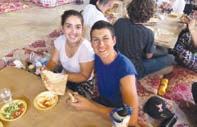
The transcript tells a whole story, with the GPA as a conclusion to that story,” St. Laurent says. Focus on your transcript
Colleges want to see growth and change throughout the story, agrees Andrew Cevasco, director at Loyola University Maryland’s Office of Undergraduate Admission. “A part of our holistic review of the high school or college transcript means that we’re looking for more than just a strong cumulative GPA.” Admissions directors look for students who do better each year, who take increasingly challenging classes and maintain a steady GPA and who take advantage of the AP, IB, Honors or GT courses that are available at their school.
PSAT and test prep
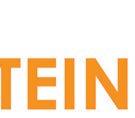

Taking a PSAT during the sophomore year of high school will prepare students for the real thing and will give them a good understanding of what kind of scores they are capable of. “There are free classes online as well as classes they can take to prepare for the exam,” St. Laurent says. “The College Board has partnered with Kahn Academy and now they can link the PSAT or any SAT with the online program to get a personalized study plan.”
Junior Year
Now is the time for students to begin thinking intellectually about where they are going to college. They have to continue their involvements and deepen their commitments with sports teams or extracurricular activities.
Stay involved
“Things that help students stand out are not just a breadth of activities on their resume, but also a depth,” Cevsco says. That is why it is integral that students stay involved with many of the same activities throughout high school. This shows the commitment and dedication that colleges are looking for. Four years on a volleyball or mock trial team will prove that they know how to stick with something.





The SAT and ACT are perhaps the most dreaded components of the college admissions process. However, with proper preparation during sophomore year, they do not need to be as dismal as advertised. Taking the SAT or ACT during junior year gives students plenty of time to make sure their scores are competitive or allow them to decide to go the test-optional route.
There is no better way to figure out what kind of college your student wants to attend
than visiting a wide range of schools. Taking trips into cities for metropolitan schools and into the country for more rural campuses will show both students and their families what is out there. Going to different schools will give families the confidence that the right school is out there and will help them know what it looks and feels like.
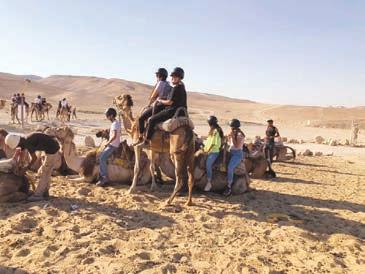
The summer going into senior year and the fall of senior year are crucial times for college admissions. “We recommend students fill out the Common App in the summer and also begin preparing the first few drafts of their admissions essays,” St. Laurent says. Filling out these applications early minimizes stress and gives students time to apply to their top choices with early action.
The Common App is a high school senior’s best friend. It is not too difficult to fill out and can be sent to the majority of universities.
Make students fill it out early and accurately so they can start submitting applications once they know what they are looking for.
SATs
Taking the SAT two or three times is totally normal and is a good opportunity to continue raising scores. Super scoring, or adding together the best scores, is a great way to maximize scores and increase a student’s chance of getting in to the college of his or her dreams.
Test optional?
There are more than 800 test-optional colleges and universities across the country, so if a student is not the strongest test taker, look into universities that value other parts of the admissions process more. “Here at Loyola, we ask them to submit an additional teacher recommendation or an additional essay. Essentially, we’ve removed one academic reference, and we are asking them to provide
CONTINUED FROM PAGE 13
another,” Cevasco says. In many cases, schools that offer test-optional admissions still offer students merit-based scholarships. Early decision vs. early action?
Early decision is a binding contract. If you decide to apply to a school early decision, you must attend that school and put down a deposit. However, if you apply early action, you simply put yourself in an early applicant pool. This will show the school your initiative without the binding agreement of early decision. Only do early decision if your student is 100 percent sure that the school is right for them, St. Laurent advises. Write your admissions essay
Choosing an essay topic is challenging but provides students with an opportunity to show off their values and separate them from
the pack. There are some topics, like sports injuries, that counselors say they have read time and time again. Make sure the topic is different, exciting and personal to the student writing the essay.

Talk to guidance counselors

Yes, there are a lot of steps to remember, but luckily there are professionals in most school districts who are trained to help your student get into college. Getting in touch with guidance counselors can give students good insight into where they can get in and the colleges that are most popular at their high schools. Most importantly, they can reassure families that they are not alone in this process. JN
This article originally appeared in Baltimore’s Child, a Jewish News-affiliated publication.

It’s no wonder this wisdom is imparted when one considers that the average cost of a private university in the U.S. is $44,551 per year, according to the National Center for Education Statistics. In a 10-year period, that price increased by 24%, and that was after inflation adjustments.
And currently, student debt in the U.S. is $1.5 trillion or $34,000 of debt for each person in our country.
It’s “overwhelming,” agrees Jonathan Murray, a financial advisor for UBS. Parents who want their children to start adult life with as little debt as possible have to figure out how to save for those educational expenses. At the same time, they, like singles and childless couples, may also be saving or paying for a home as well as their own retirement.
And at a greater rate than previous generations, today’s twentysomethings and thirtysomethings also are paying off their own student loans.
“How do you do all that,” Murray says, literally asking the $100,000 question. His No. 1 recommendation? Millennials need to start saving for retirement now, he says, pointing out “there’s no such thing as a retirement loan.” Even putting aside a small amount of money will be helpful, he says.
Next, pay off any high-interest credit cards, he says. “Too many millennials only pay the minimum due.”
Another option is an education savings account, a “mini 529” that allows parents



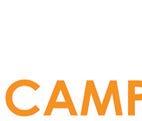


to invest up to $2,000 a year. There are also Series EE savings bonds that can be purchased through the Treasury Department and be used for educational expenses.

Finally, a handful of colleges and universities across the nation (about 35) have adopted income-share agreements in which a student pledges a certain percentage of post-graduate income, anywhere from 2-7% based on major and other factors, in exchange for tuition. Essentially it’s a loan, but payback is structured differently.
Purdue University in Indiana was the first to adopt this innovative approach, Murray says, which on the plus side “forces parents and kids to have skin in the game and graduate.”


This is worth noting because much of the student debt in this country is from students who do not graduate, he says, “which is such a shame. The college premium is at an all-time high. Kids with degrees will earn more.”

His last bit of advice? “Avoid bumpersticker peer pressure.”

Murray served as assistant dean of admissions at Dickinson College in Carlisle, Pennsylvania for six years and says “parents think they need to get their child in the best school out there.”

That’s not true. They need to find the “best fit” for their child, he says. “You don’t want them to be miserable because you wanted cocktail bragging rights.”
This article originally ran in Baltimore’s Child, a Jewish News-affiliated publication.
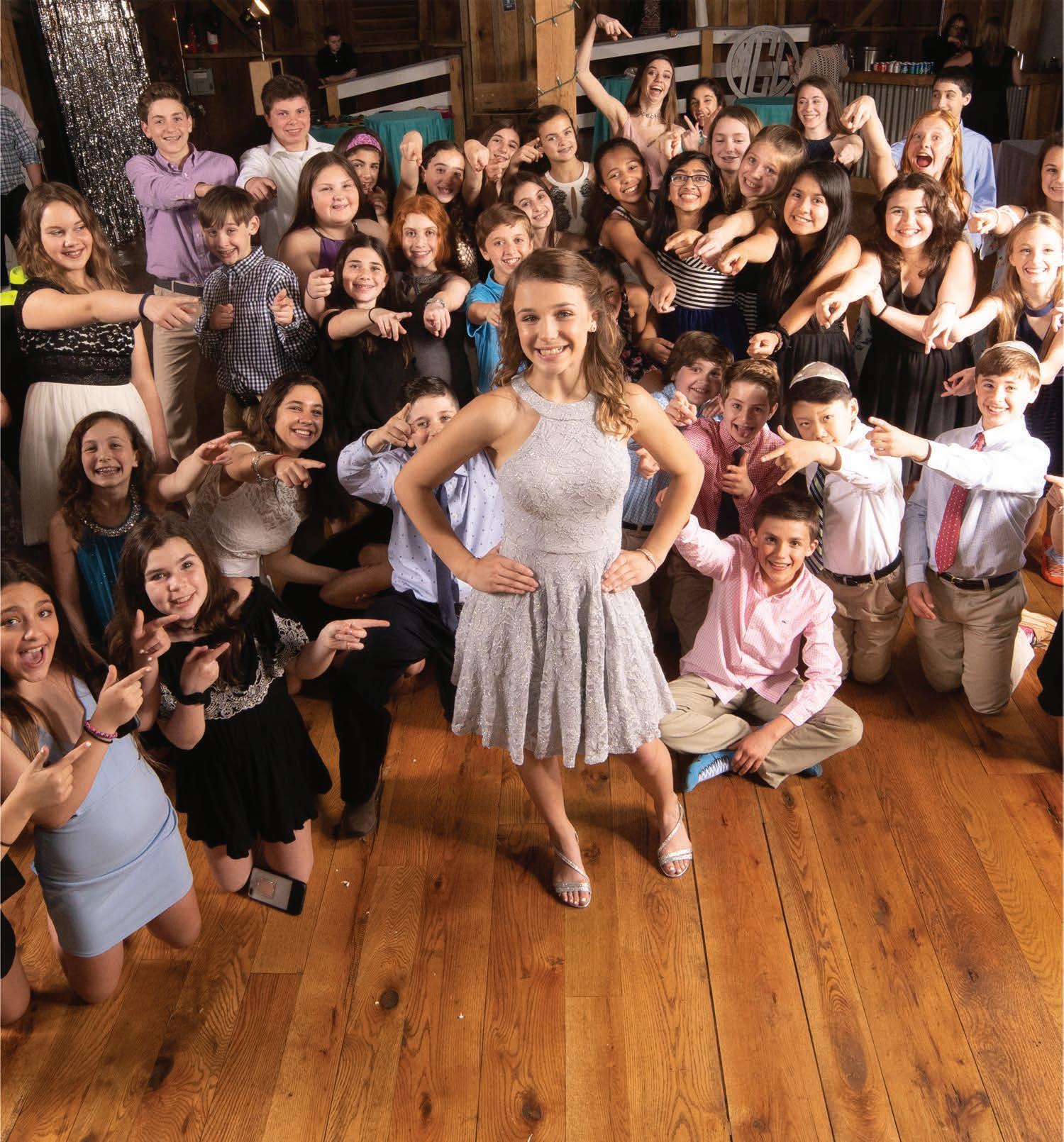

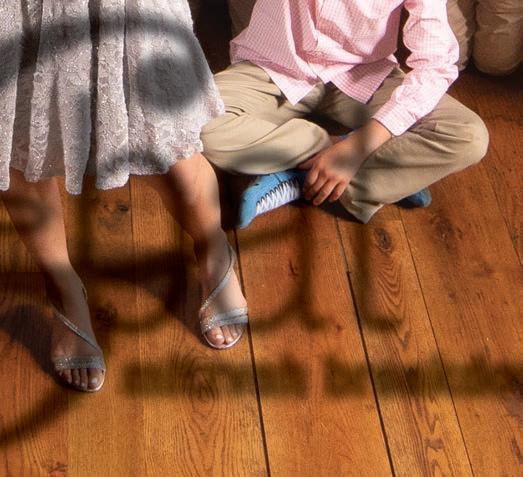

Spectacular views, intuitive service and unique gastronomy. The Lakeview Ballroom at the JW Marriott Camelback Inn is the perfect home for your next celebration. Contact Frankie Vargas at: 480-596-7063

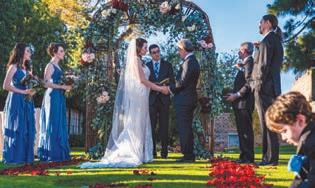
5402
AZ 85253 Frankie.vargas@marriott.com | Tel 480.596.7063 www.marriott.com/phxcb


 MATT SILVER
MATT SILVER
The phrase adult bar or bat mitzvah, if not an apparent contradiction in terms, reads with some incongruity. Why would you need a bar or bat mitzvah if you’re already an adult?
is being a good role model, modeling for their children that Jewish learning and Jewish customs are important parts of individual life and an important part of family life.
Do you have something that belonged to someone you love sitting in a drawer. A ring that a daughter love to try on?

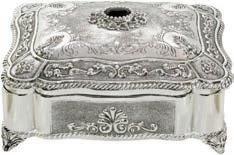

loved one.
Memories are Priceless.
In a more technical sense, how could you already be an adult without having had a bar mitzvah? Questions like these might twist even Maimonides’ brain into an advanced yoga pose. But, as a practical matter, there are myriad reasons why a Jewish adult might have not gone through the holy rite of passage as a young man or woman. The more interesting question might be: Why would they want one?
What motivates adults balancing jobs, kids, mortgages — what compels them to seek this knowledge, attain this milestone that comes with no tangible reward (one would have to think the adult bar and bat mitzvah’s gift purse typically pales in comparison to the 13-year-olds)?
According to Rabbi Howard Cove, now the rabbi of Beiteinu Synagogue in Wynnewood, Pennsylvania, who has led several bat mitzvah classes for adult women, there are several reasons, especially for Jewish women of a certain age.

For younger women, Cove suggests, women in their 40s with kids of their own approaching bar and bat mitzvah age, what it’s often about (at least in the beginning)
But for the slightly older bat mitzvah, it’s often about something more personal.

“You have to remember that the Torah often wasn’t accessible to girls,” said Cove, referring to women in their 60s, 70s and beyond whom he has tutored.

“They could do Haftarah, but they could not do Torah, and so with some of these women it was ‘I was never allowed. I couldn’t do what I’m [now] preparing to do for my adult bat mitzvah.’”
In other situations, women who have studied with Rabbi Cove later in life say they were given the option of having bat mitzvahs as girls but instead chose celebrations like Sweet 16s, eschewing the heavy time commitment of bat mitzvah study at a time in their lives when Judaism wasn’t as important to their sense of self as it would become.

“And some women,” Cove said, “just loved to learn. They were very bright, they had careers and they wanted to learn more about their own faith, their own religion and their own Judaism.”
Unique to all adult b’nai mitzvah, regardless of gender, is an exercise of free will and, often with that, an increased level of accountability.



Unlike your average adolescent approaching bar or bat mitzvah age, who may, more often than not, take the idea of a bar or bat mitzvah — and the compulsory nature of the attendant preparation — for granted, adults enter into the process completely of their own volition, eyes fully open to a time commitment that might span anywhere from 10 months to two years.
This actually makes for a process that’s a little less stringent and regimented than what you may remember from your own bar or bat mitzvah preparations.
“At the beginning of the process in each case, we never established a date for the bat mitzvah,” Cove added. “We went six months, we went eight months, we saw where the progress was, and then we decided, OK, six months from now, a year from now, we’ll have a date.”
“It was kinda cool,” Cove continued. “We were learning for learning’s sake at the beginning, with the knowledge that ultimately it would lead to a bar or bat mitzvah, but we didn’t put the pressure on the group, or on me, to decide, ‘OK, we’ve got 10 months from start to finish.’”
It’s this kind of latitude that the
student of conventional bar or bat mitzvah age might benefit from but very rarely has as a luxury.

“The process grew organically (with the adults), and that’s a lot different from how it usually goes (with the kids).”
Organic or not, there’s always that fear of being up there on the bimah, on that
the dread of public speaking actually gets more acute with age.
School-age kids, like it or not, have to give reports and presentations in class all the time. But, depending on one’s profession as an adult, one’s public speaking chops, not to mention nerve, can atrophy.
That may be why, more than anything
an opportunity to do this … these are the memories they take with them that excite them to this day.”
Loath to admit favoring one demographic cohort over another, Cove concedes that it does feel different to work with the adult groups and see them succeed.
“There is a recognizable, heightened sense of joy and accomplishment for me to have a group of adults finish the process, as opposed to me just standing with an individual child.”
Of the adult classes Cove’s shepherded all the way to bat mitzvah, there’s a special kind of pride: “I was proud as a peacock to be able to introduce these women to the congregation.”
religious equivalent of a pitcher’s mound, essentially all alone, yad in hand, looking down at these foreign marks on an ancient page … and just blanking.
This kind of unadulterated terror transcends age, which just goes to show maturity and fear of public speaking are by no means mutually exclusive concepts. It’s even reasonable to surmise that, for many,
else, Cove thinks it’s pride in conquering that fear and standing before their community, chanting Torah and leading the service, that becomes the most lasting memory for many of his adult bat mitzvah students.
“The fact that these women in their 40s, 50s, and 70s get up in front of the congregation, when they’ve never before had
Over the years, Cove has lost touch with some but kept up with several of his bat mitzvah groups’ alums.
“I know if they thought about it, (the bat mitzvah) would be one of the top five to 10 accomplishments in their lives, which is pretty cool.” JN
THIS KIND OF UNADULTERATED TERROR TRANSCENDS AGE, WHICH JUST GOES TO SHOW MATURITY AND PUBLIC SPEAKING ARE BY NO MEANS MUTUALLY EXCLUSIVE CONCEPTS.
The Embassy Suites invites you to celebrate the important milestone of your Bar or Bat Mitzvah; and to enjoy a Shabbat dinner with friends/family. We would be honored to host your special day by customizing your menu, as well as dedicate event planning and catering services you need. Our experienced and professional team will provide quality service and accommodations that will set your event apart from the rest.



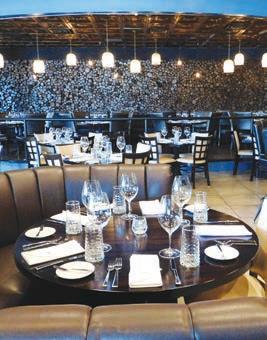
 JESSE BERNSTEIN | CONTRIBUTING WRITER
JESSE BERNSTEIN | CONTRIBUTING WRITER
The first paid writing job I ever held was as a bar mitzvah speech ghostwriter.
This was a few years after my own bar mitzvah — although, thinking back now, my own d’var Torah was nothing particularly special. What I remember about it more than anything was arguing back and forth with my father about how many jokes was too many. I certainly can’t recall the delivery all that clearly, what with the speed and adrenaline of that day. I didn’t even remember to wear a belt to the synagogue.
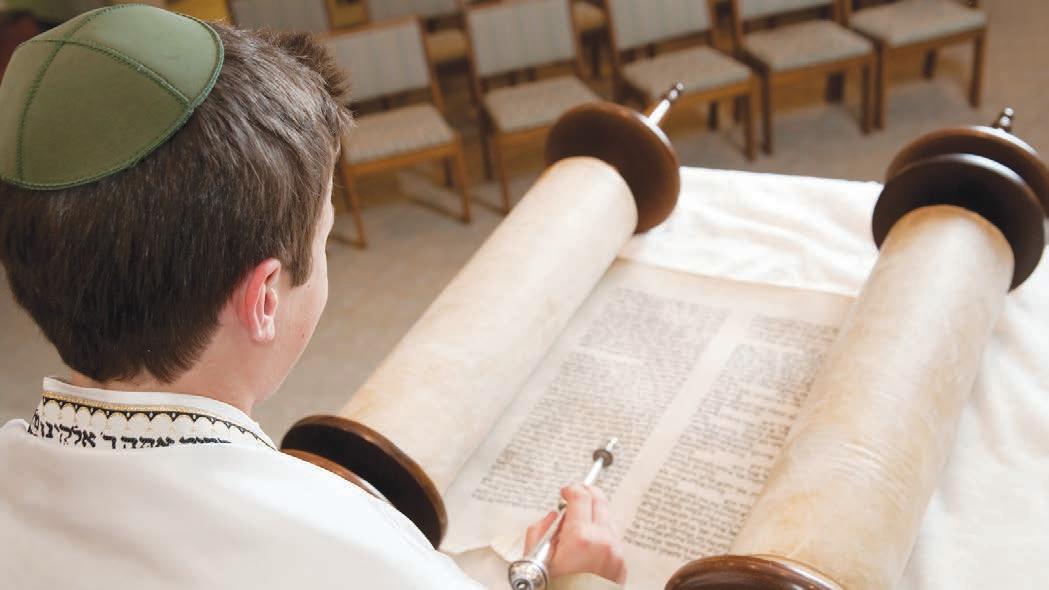
But I was an English major in the making, and I was already writing quite a bit. I edited a magazine at my school, and I was starting to write fiction on my own in earnest (emphasis on earnest). Most relevant to this particular job was when my classmates would ask me to punch up their student government stump speeches, which was terrifically fun. I’d acted quite a bit in student productions by then, and I’d written silly sketches for class assignments, but to actually see people using my words in a persuasive manner — and getting laughs
for them! — was a singular experience.
I can’t recall exactly how my first d’var Torah ghostwriting job came to be. It may have been that my mother offered my services to a friend concerned over her progeny’s inability to produce a speech on his own. It’s also possible that the friend mentioned her son’s difficult experience, and I oh-so-graciously suggested that my services could be had. You do — well, I did — quite a lot of talking and not a lot of thinking at that age.
Either way, I was offered $36 per hour to produce a d’var Torah with the family friend’s son. If I had known that would be my high-water mark for remuneration in my field of choice, I might have chosen a different path, but it seemed then to herald unending spoils just over the horizon. I accepted conditionally: The arrangement would be secret and I would be invited to the service (though not to the party).
As I recall, we had three sessions, totaling about four hours. His mother drank coffee in the other room while we talked through his parshah, which I had read and reread, collecting commentaries
and pulling the best bits to rip off (sorry, Rashi). I would try, to the best of my abilities, to draw thoughts out of my “client” as I typed, guiding him in this direction or that. It was slow work. I don’t think we wrote more than a paragraph during the first session.
My confidence took a hit that day. At Jack M. Barrack Hebrew Academy, I was not even a particularly gifted Tanach student. I remember thinking, “What am I doing taking someone else’s money to make pronouncements on the Torah?” But as the second session approached, something clicked.

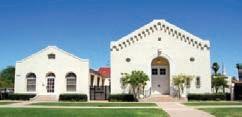
I reread, for the umpteenth time, the same few verses we were tasked with wringing meaning from. This future bar mitzvah, as I recall, had one of the juicy parshayot, one with a real story, some drama, and even a cliffhanger (a result of the storytelling arc of the triennial
two more or less secular Jews doing primitive Torah study together. We wrote quite a bit more, and spent most of our final two sessions polishing what we’d written.
Unfortunately, this story does not do either of the fun things it could have.

I didn’t start a d’var Torah ghostwriting empire, becoming the secret weapon of frustrated soon-to-be Jewish adults. Nor was my mind enflamed by the possibility of Torah study as a significant part of my life, eventually leading to a heartwarming friendship with my daf yomi partner. I was paid, I was recommended to one more family friend, for which I was also paid, and I never did it again.

When I think back to those sessions, I try to figure out what I gained, beyond a great sum of money and a funny story. Certainly, there was value in trying to teach someone something,


I WAS OFFERED $36 PER HOUR TO PRODUCE A D'VAR TORAH.


IF I HAD KNOWN THAT WOULD BE MY HIGH-WATER MARK FOR REMUNERATION IN MY FIELD OF CHOICE, I MIGHT HAVE CHOSEN A DIFFERENT PATH.


reading cycle). My own parshah was probably, pound for pound, one of the most boring in recorded liturgical history; truly, I defy you to come up with something relevant and exciting to say regarding the lengths of wood required for building the mishkan.

But reading over the verses, for the first time in my life, I made the most obvious connection for a budding writer: Why don’t I just read this as fiction? Not as false, but as I would read a work of fiction, attending to the text with the same sort of lens. It was so gobsmackingly obvious as to embarrass me a little bit.
Our second session went much better than the first. It turned out that he had done a little more reading, too, and so we went into the text together,
especially someone just a few years younger than I and something about which my knowledge was limited.

And that it served as writing practice is also footnote-worthy — I did my very best to work within the accepted bar mitzvah d’var template (Shabbat Shalom, “This week’s parshah is,” synopsis, short discussion of themes, relation to bar mitzvah project, conclusion, thank yous) without being lashed to it. I suppose I also learned what working parents could and couldn’t find the time for.
I suppose I’ll really find out what I learned when I sit down to do this with my own family one day. JN




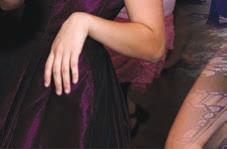

 HILARY DANINHIRSCH
HILARY DANINHIRSCH

I’d been keeping a secret from my daughter. A colossal one.
In 2016, for a nine-month period, I had been working on a project that, had this been a CIA operation, would have been designated as highly classified, top secret and I’d-tell-you-but-then-I’d-have-to kill-you.
The project involved covert communications by email and letter, creating hidden file folders on the family computer and your basic espionage.

Finally, though, the day was here: Oct. 22, 2016. Sure, it was my daughter’s longawaited bat mitzvah and that, of course, was a meaningful milestone. But I confess that when I woke up that day, my first thought was, “Today is the big reveal! I can’t wait for her to see the video!”


All of this subterfuge for a bat mitzvah video.


A bit of background:
My daughter, Jessica, had been training in gymnastics for several years and was on the competition circuit. It was purely for recreation — she had no intention of going into the big leagues, but she loved the sport. She knew the names of all of the Olympic gymnasts, past and present, and even the Olympic hopefuls. On a summer vacation to Colorado in 2015, we stopped at the Olympic training center in Colorado Springs and watched the men’s practice — she knew everyone, even the ones who weren’t household names yet.
When we started planning her bat mitzvah, it was a no-brainer that gymnastics would be the theme of her party; specifically, “Jessica’s Invitational.” Jessica worked alongside us to help plan and design everything from the

table settings (each one represented by a different gymnast and featuring facts about them), to the welcome sign to the cake baked by my sister-in-law, replete with fondant balance beams and tiny gymnast figurines. She also helped design the invitations: at the top, in her favorite colors, were five Jewish stars linked together, reminiscent of five linked Olympic rings, along with our logo of a gymnast balancing on elbows, legs in the air.
Individually wrapped chocolate lollypops, imprinted with an image of a gymnast in motion, served double duty as favors and table numbers.
We planned to show a video to our guests during dessert; my husband worked for months to create a sweet montage of Jessica through the years, all set to meaningful music.
Though she didn’t know it, our video was going to knock her Converse socks off.

Early in the year, I reached out to Jessica’s favorite gymnasts and asked if they could record a short video, congratulating her on her bat mitzvah, or perhaps encouraging her in her gymnastics training.

Short of cyber-stalking anyone, I researched where the gymnast trained, if they had a personal website or Facebook page, if they had an agent or a PR person, etc. I emailed some of them, either directly or through their gyms, and wrote good oldfashioned, heartfelt letters to others.
I did not expect to hear back from anyone — after all, these are busy athletes, and 2016 was a summer Olympics year — why would they take the time out of their day to record
a video for a stranger?
On a cold day in January, I sent my first email out to Jake Dalton, who was on the men’s Olympic team.

Within two hours, I received a video response from him; jumping up and down alone in my house, I hoped that no neighbors would walk past my window as I processed this initial victory.

After about six months, we received 13 videos out of about three-dozen requests. We buried the videos in the computer with disguised titles.






Some of them were very sweet — Laurie Hernandez and Nia Dennis made the videos personal, incorporating facts about Jessica and things that they had in common with her.
Other responders included Jordyn Wieber, Maggie Nichols and Sam Mikulak.
When I received a video back from Gabby Douglas, I remember running upstairs to babble incoherently at my husband, who was home sick at the time, dragging him out of bed to come downstairs and see it for himself.
Other gymnasts were more difficult to reach.
Despite many requests, I never heard from Jessica’s favorite gymnast, Nastia Liukin. It’s quite possible that she pegged me as crazy lady and thought I would go away if she ignored me. I also tried my best to get in touch with Aly Raisman, our fellow Jewish gymnast, but to no avail.


Still, we had a good amount of gymnasts representing Team USA. We tacked the gymnast video on to the very end of the main video; after it ended, there was a short pause, after which you could hear the Olympic music in the background with a message that said “Wait!! Nobody Go Anywhere! A few special folks want to say a little something…”
I also tipped off my photographer in advance that this was a moment to be captured on film, and she managed to shoot some great pictures of Jessica in various stages of awe! And there may have been a few (i.e., a river) of mom tears shed that day as well.
An incredible coincidence occurred the next day, making the weekend all the more memorable:
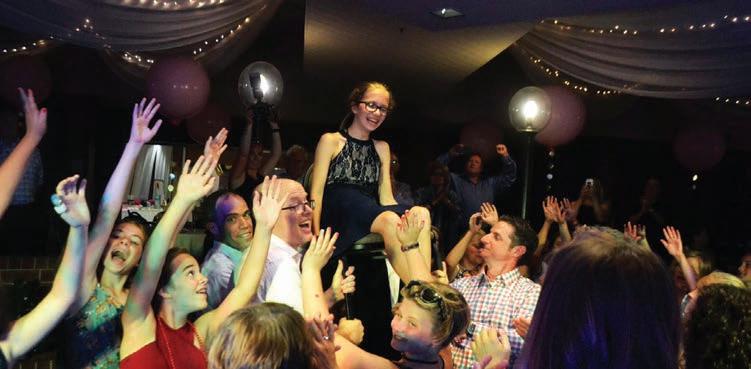






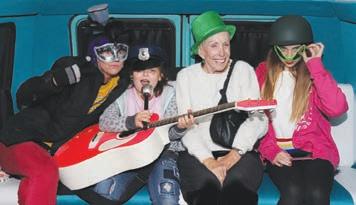

Jessica wanted to see the Kellogg’s Tour of Gymnastics Champions, which was to take place the day after her bat mitzvah, but we both agreed that it would be too much in one weekend. But about 10 days before the bat mitzvah, Jessica’s coach invited her (and several other teammates) to learn a floor routine and perform at the opening ceremony of that very event. We decided it would be a nice reward for all of that bat mitzvah prep, so Jessica left her bat mitzvah brunch early to head down the arena.
In addition to learning and performing a cool floor routine, she got to participate in a “chalk talk” with some of the participating gymnasts, including the elusive Nastia Liukin and Aly Raisman.
After the show was over, some of the gymnasts came out on the floor to sign autographs, including none other than Nastia Liukin, who signed Jessica’s book and took a selfie with her. We even met Brandon Wynn, who was one of the gymnasts that filmed a video for her.
Although two years have passed, I can still picture her face and her reaction to the video, and it never fails to get my tear ducts going. That moment, when she first saw and heard Jake Dalton saying, “Hi, Jessica, Jake Dalton here!” was absolutely priceless. And I can use it as leverage forever. JN
Host
Our professional event staff are experts in AV, room setup and event space planning. We also have free, convenient parking.



We will make your event memorable.
• Bar/Bat Mitzvahs (Services and Celebrations)
• Luncheons and Dinner Receptions

• Fundraisers and Galas
• Weddings and Showers
To book a tour, please contact 480.481.7123 or info@iljcc.org.



Delicious chocolate tastes the same in Michigan as it does in Arizona. Such is the mindset of one Michael Portnoy, the owner of Gayle’s Chocolates in Cottonwood.
Portnoy’s affection for Gayle Harte’s confections in the upper-Midwest town of Royal Oak propelled the businessman to take over Gayle’s Chocolates (following her 2018 retirement) and move the company to the desert oasis of Cottonwood in northern Arizona.
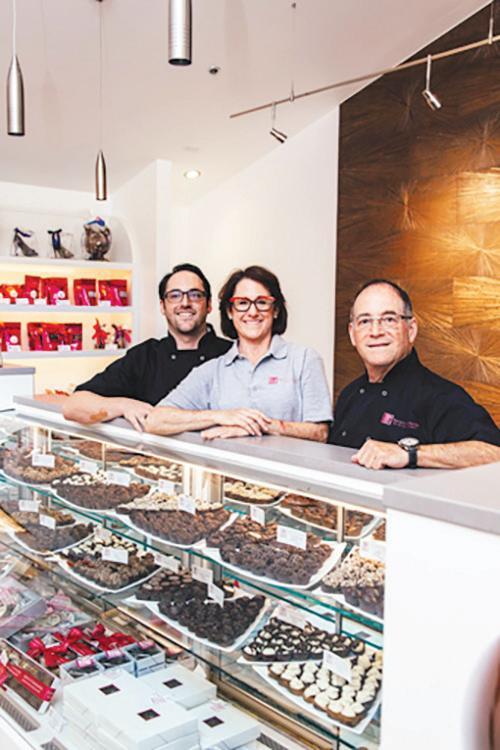
“Once I began eating her creations, I fell in love with them,” said Portnoy, who met the eponymous store’s founder around 2012. Harte’s enterprise had emerged as a result of her insatiable cravings, as she couldn’t find any chocolates in Michigan that appealed to her tastes.
“Gayle has a wonderful palette, so she put her own recipes together and started her own business,” Portnoy said.
Four decades after Harte established her sweet-tooth trove in 1979, Portnoy and his
family — including wife Andrea and their son, Louis (“he loves to cook”) — set up shop a half-mile from Old Town Cottonwood. The Portnoys, along with production manager Colleen Corson, have carried on Harte’s tradition since June of this year.
Why relocate to Arizona?
“Gayle had a good footprint in Michigan,” said Portnoy, noting that he chose Cottonwood because “it’s affordable and near a considerable number of wineries,” which seemed like a natural complement to Gayle’s offerings. “I knew it was a good opportunity.”
Upon transporting the necessary equipment to Arizona, the Portnoy family rented a school kitchen and began selling chocolates from there. “We didn’t want to lose corporate business that accounted for a lot of our sales” before moving into the current store.
Portnoy’s childhood was rooted in Judaism, and he is currently affiliated with a synagogue in Sedona. “My wife and I come from Orthodox Jewish families, but I’m
more spiritual than religious.”
Portnoy retired from operating a printing business in Florida and “dabbling” in real estate before turning his attention to Harte’s labor of love.
Truffles, of which there exist 20-plus types, are the company’s top sellers. But what makes Gayle’s treats distinctive, Portnoy said, are their originality.
“I personally think we have products that are very unique, molded into various shapes such as cars, animals and shoes. We have the popular Vortex Crunch and copyrighted recipes.”
Soft and chewy Michigan cherries are a key ingredient of many of the special offerings.
Gayle’s Chocolates conducts approximately 70% of its business between October and April. This year, there’s no shortage of holiday-themed creations, including a 7.5pound chocolate turkey piñata stuffed with goodies; chocolate dreidels and candy bars with Chanukah wrappers.
Portnoy’s business, whose website motto
is “For the love of chocolate,” caters to a slew of celebratory events such as weddings. “If somebody wants a candy bar with a special wrapper for guests, we’ll accommodate them,” he said, noting that some clients request packaging that features photographs. The company has four full-time employees (counting Portnoy) and a handful of parttime workers. A few more may be hired in time for the holidays.
As for whether Gayle’s will open a retail store around Phoenix, Portnoy said such an endeavor — possibly in Kierland Commons — is on the wish list. JN
Jim Luksic is a freelance writer and editor based in Phoenix.
The Jewish Federation of Greater Phoenix’s Business & Professionals Group strengthens relationships among Jewish professionals through education, networking and communal and philanthropic engagement. Three divisions provide opportunities to expand professional and social circles while making a meaningful difference in the local Jewish community: the Cardozo Society, Chai Tech and Real Estate & Finance.
The Cardozo Society is geared for Jewish legal professionals, including lawyers, judges and law students. This society puts on several events per year including a CLE each spring as well as opportunities for smaller, more personal events like roundtables and general counsel forums.
Chai Tech is open for all Jewish professionals in the technology and engineering industries. This group’s events focus on the newest innovations in technology, exclusive tours and the ability to learn from industry experts.

Real Estate & Finance welcomes the growing population of Jewish real estate and finance professionals in the Greater Phoenix area.
Events are open to all Jewish professionals in the real estate, mortgage and finance industries and include an annual economic outlook featuring Elliott Pollack each January.
Each division is currently looking for more committee members. The role of a committee member varies, but the main duties include event planning, outreach, attending meetings and events and most importantly, building a stronger network in the Jewish professional community.

Shaaron Elisha, co-chair of Real Estate & Finance, says he finds meaning in his involvement. “I’m involved because I like community and I like to learn. This organization brings educational and networking events to the Phoenix metro area which strengthen the professional community. In essence, it shines a light onto the nations while making the desert bloom. Can’t think of a better way to represent our culture and value to the Valley and to greater Arizona.” JN
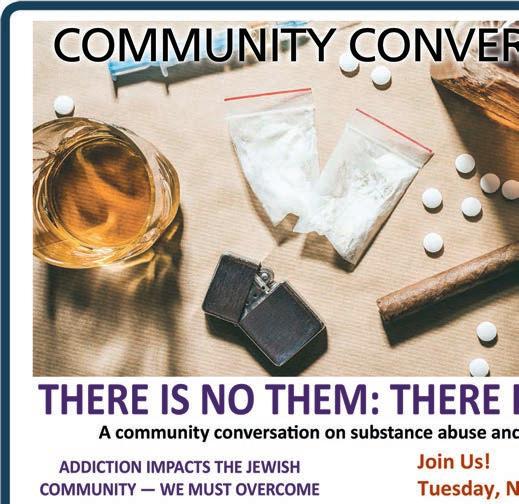

Even if your family business is something less than a global media empire, succession planning can be stressful. Family businesses span every sector of our economy, and generate approximately one-half of the U.S. gross national product annually. Almost one-third of the Fortune 500 are family businesses.
One of the problems faced by family businesses is that they tend not to outlive their founders. Unfortunately, two-thirds of businesses fail following their initial transfers. This is often the result of poor succession planning. It is important to understand the business, financial and personal goals underlying the transition of any family business, and making sure that proper planning has been done to ensure success.
One reason for the failure of business transfers is because small business owners, family business operators and local entrepreneurs often perform many different business functions that are not easily replaced by one or two other people.
Additionally, the family element in every family business can mean the difference between its success or failure during the transfer process. The sudden, unexpected retirement, disability or death of the business owner are all common events that can trigger a business transfer without forethought.
When thinking about the future, here are the questions business owners should consider and prepare for:
1. If you die or become incapacitated unexpectedly, who can operate and manage your business from an administrative, sales, marketing, operations and accounting perspective, among others? Even if it’s only temporary or to preserve company value while contemplating a sale.
2. Do you have a management succession plan? Have you discussed that plan with key employees and family members?
3. Do you have children or employees who are prepared to step into your business role? Do they have the requisite experience and licenses to be effective in the role?
4. If you die or become incapacitated unexpectedly, are there resources to hire

or promote someone to replace you? Is there a gap-filler before the new employee steps into your role? Is your spouse authorized to sign checks, make bank transfers or perform other corporate tasks, for example?
5. If you die or become incapacitated unexpectedly and have business partners, will your business partners fairly compensate your family for your partnership interest? Do you have a buysell agreement? Do your heirs have the right to sell your interests?
6. Will your spouse be financially dependent on the business income in the future?
7. Do your business partners have the resources or insurance to provide compensation to your family? Do you have key person insurance?
8. Do you have a plan to transition the business to your heirs and, if so, when and how? Are you confident in your heir’s desires and capabilities? Are you trying to preserve your legacy for your grandchildren? Have you considered grandchildren that may want to run the business in the future?
9. If you plan to transition the business to only one heir, do you plan to provide a similar inheritance to your other heirs? Will the company be managed for the benefit of additional family members, with the working heirs receiving a salary?

10. Are you and your spouse in agreement regarding the distribution of the business or business assets to your heirs? Have you in-law proofed your estate?
11. If you transition the business before your death, do you require certain distributions and profits from the business to support you in your retirement?
Tough questions must be asked and answered. Discussions with an estate attorney, financial planner and tax advisor can help you develop a strategy for long-term financial success for your family. JN

A: The standard deduction increased in 2018 and may have exceeded your total itemized deductions. At least two charitable giving strategies may provide additional tax benefits. If you are over 70-1/2 and taking your Required Minimum Distributions (RMD) from an IRA, you can transfer up to $100,000 from your IRA directly to your favorite charity while lowering your taxable income. Another strategy is to “bunch” your charitable contributions by donating in excess of the standard deduction in one year, and then utilize the standard deduction in subsequent years. Establishing a Donor Advised Fund (DAF) for your “bunched” contributions provides additional flexibility. A DAF can be established with organizations like the Jewish Community Foundation.
Disclaimer: This is not intended as tax or legal advice and should not be relied upon for that purpose. Contact your tax advisor or the Jewish Community Foundation for further information.
The Jewish Tuition Organization (JTO) is a student tuition organization (STO) that raises funds through the Arizona dollar-for-dollar private school tax credit and provides scholarships for students to attend six Valley Jewish day schools. Individual tax payers, as well as C corporations, S corporations, LLCs ling as S corporations and insurance companies are eligible for the tax credit. Supporting the JTO through the dollar-for-dollar tax credit is a wonderful cost-free way to support Jewish education and the community. For 20 years, with your help, the JTO has been making Jewish education possible for the children in our community, thank you!

What are the 2019 individual tax credit amounts? For tax year 2019 married couples may take a maximum credit of $2,269 and people who file single can take a credit up to $1,135.
Can I give more to the JTO than the tax credit amounts? Yes, you can give the JTO as much as you would like to give, however, you may only take the dollar-for-dollar tax credit up to the maximums set by the state. The JTO is a 501 (c) (3), so any amount you give exceeding the allowed credit amount, or if you don’t take the credit, is a charitable contribution. All support is appreciated.
Which schools do the JTO support? The JTO supports Desert Jewish Academy in Chandler, Pardes Jewish Day School in Scottsdale and Phoenix Hebrew Academy, Shearim Torah High School for Girls, Torah Day School and Yeshiva High School of Arizona all located in Central Phoenix.

Can I choose the school or a student to support? There are several ways to support the JTO. Your support can go to the general fund that provides need-based scholarships to any student that needs the help, you may also recommend your support funds need-based scholarships at a selected JTO partner school, or you may recommend a specific student who is not your dependent.
How does the corporate tax credit program work?
C corps, S corps, LLCs filing as S corps and insurance companies can apply through the JTO for a dollar-for-dollar tax credit. Taking the corporate tax credit also meets CRA requirements for financial institutions. Applications for the tax credit MUST go through an STO such as the JTO. While the JTO can accept corporate tax credit applications throughout the year, they are submitted to the Arizona department of revenue (ADOR) in July. Applications should be sent to the JTO by June 25. Payment is not due, and cannot be accepted, until the ADOR has sent approval to the JTO, usually by mid-July. There is not a maximum amount for corporations, but S corps have a minimum of $5,000. All corporate money funds need-based scholarships. Corporations may recommend a school, but not a specific student. Please call the JTO office for more details.
Where can I find more information about the JTO and the tax credit? Visit www.jtophoenix.org, call 480.634.4926 or stop by the JTO offices at the Ina Levine Jewish Community Campus – 12701 N. Scottsdale Road.
WHAT ARE OPPORTUNITY ZONE FUNDS?


Opportunity Zone funds, including the Caliber Tax Advantaged Opportunity Zone Fund, LP, are investment vehicles created for investors to take advantage of the recent tax code changes. The change allows for a reduction in capital gains tax through investments in qualified “Opportunity Zones”.
WHAT IS AN OPPORTUNITY ZONE?
Opportunity Zones are financially distressed communities around the United States that qualify for designation through the 2017 Tax Cuts and Jobs Act and are being revitalized using private investments instead of taxpayer dollars.
WHAT ARE THE BENEFITS TO INVESTING?
Investing into an Opportunity Zone Fund offers three important tax benefits: it gives private investors the chance to benefit from their investments thanks to the capital gains tax incentives, it defers federal taxation on recent capital gains until December 31, 2026, and lastly it allows investments held for ten (or more) years to pay as little as zero taxes on profits.
Tobyre4u@aol.com 7077














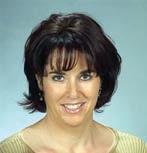


The powder room is usually the smallest room in the house and the most fun to design. It requires the least amount of decorating, yet can provide the greatest amount of creativity and surprise.

As practical as bathrooms have to be, the powder room can be the opposite. It’s not a room in which anyone spends much time. Since function isn’t a big consideration, it is important that it feels good and looks good. It should feel welcoming.
Make it an adventure to enter this room and experience the joy of surprise. My main criterion for designing a powder room is to make it nothing like anyone would expect when they walk in. It is the greatest chance you have to throw all caution to the wind and bring out your most outrageous ideas.
Of all the practical features, the sink is probably the most seen. This is where you can make a design statement: Use something unusual like the raised vessel sinks popular today with faucets coming out of the wall. These vessels can be placed into pieces of furniture such as cabinets, which can be anything from antiques to ultramodern pieces in wood, metal or glass.
Since running water is the main attraction, you might play it up with a fountain and adorn it with aromatic candles to add to the ambiance. Involve as many of the senses as possible in the experience.

I don’t often say this, but good lighting doesn’t matter in a powder room — as a matter of fact, the darker the better to create the mood. Just in case serious
transition, you can carpet the whole space or add an area rug. This also serves to absorb sound and give a feeling of softness and comfort.
In my own home I upholstered the walls in fabric with 2-inch wide black and white stripes. I also upholstered the ceiling and the back of the door so it is completely padded in the same bold contrasting colored pattern. Once someone came out of my powder room and said they felt like they were Alice in Wonderland in a gift box. I was delighted that I could give someone an “E ride” at Disneyland merely by stepping into a room in my home.
To give the necessities a different slant, I have a free standing toilet paper holder (since I didn’t want to attach anything practical or expected to my fabric walls) and another freestanding unusual shelf to hold towels and interesting objects of interest to delight the eye. Even the soap is color-coordinated and a funky shape. I also have a beautiful piece of art which I did hang on the fabric wall to give a sense of formality.
Do something out of the ordinary when decorating your powder room, so when your guests come out of the powder room (hopefully, with a smile) they will feel entertained and cared about.
Don’t be afraid to express yourself. Always remember, room have no feelings, you do! JN
based interior designer and the CEO of Barbara’s Picks, an online resource for interior design. Visit












Jewish singer-songwriter Lisa Loeb will visit Tempe’s Zia Record Exchange on Nov. 29 for Black Friday. Her visit is in conjunction with the 25th anniversary of her platinum hit single, “Stay (I Missed You).”
“I’ve heard it’s a great record store,” she said. “I love going to Phoenix whenever I can and we had some free time in the schedule, so it all coincidentally worked out that I could do this event while I was in town.”
Loeb’s most famous song debuted for a mass audience in the 1994 romantic comedydrama “Reality Bites,” directed by Ben Stiller and starring Winona Ryder and Ethan Hawke. Loeb was friends and neighbors with Hawke in New York City, and he gave Stiller a tape of her song. The director put it into the film’s credits, and it subsequently became the soundtrack’s lead single.
“Stay” was actually created for Daryl Hall of Hall & Oates, who was looking for songs
LINDA MOREL | CONTRIBUTING WRITER
After a lifetime love affair with butter, cheese and milk, I’ve suddenly become lactose intolerant. My doctor suggested I stop eating dairy products cold turkey, and with regret, I complied.
Lactose intolerance is a disorder caused by the inability to digest lactose, the main carbohydrate in dairy products. People with this condition don’t make enough of the enzyme lactase, which is needed to digest lactose. Studies have estimated that lactose intolerance affects about 44% of Americans in varying degrees.
I easily adjusted to this radical change in diet at lunch and dinner, where plenty of options abound: grilled vegetables, meat and fish, tuna and chicken salad, pasta and most Asian foods.
But figuring out what to eat for breakfast was challenging. No more yogurt, cottage cheese, pancakes and cereal with milk. There are many lactose-free milks, cheeses and yogurts available today. They are excellent options for people who produce enough lactase to digest them
for a solo project. While Hall closed down his search before the song was finished, it led to a hit single for Loeb.
“I was trying to write a song about love and heartbreak, which is what I was going through at the time,” Loeb said. “It’s a very personal song and a song that was probably a lot more direct and heartfelt than my other songs at the time, which were more poetic and mysterious.”
Loeb earned the distinction of being the first artist to top the Hot 100 before being signed to a record label. She never expected the song to take off the way that it did.
“By the time I could even imagine it, it was already happening,” she said. “Being a musician was always something I worked at my whole life. It all felt natural as it was happening, but in retrospect it was unbelievable. It was really exciting to have a song on the radio.”
Just seven months after the movie’s official release date, “Stay” was certified gold.
Loeb is also visiting the area to spend
Thanksgiving with family. Her brother, Benjamin Loeb, recently became the new executive director for Congregation Beth Israel in Scottsdale.
He always knew that his sister made great songs, even before the success of “Stay,” and it was only a matter of time before something broke for her.
“I remember hearing the song for the first time a few months to a year before it was in the movie and being very struck with it,” he said.
Benjamin became the executive director for the congregation earlier this year. Like his sister, he is a musician and is an accomplished solo pianist. He has a doctorate in musical arts from Juilliard and previously worked as the executive director of Quad City Symphony Orchestra in Iowa before coming to CBI.
He ended up taking the job because he was as interested in administration as he was in music. He had spent more than a decade working at different musical venues and realized that he could use those same skills in the
synagogue world.
His sister plans to attend a Friday night service at CBI after her performance at the record store.
“Not only will she be attending services, but she’ll be performing there as well,” Benjamin said. “One of our rabbis, Rabbi Sara MasonBarkin, is a big fan of Lisa’s and it turns out that a few years ago, she had written a sermon that included one of Lisa’s songs.”
Mason-Barkin is going to give that sermon again, and Loeb will perform for the congregation afterward.
For Loeb, the Black Friday celebration at the record store is a great opportunity to perform some new songs, but she will also sing older songs and, of course, “Stay.”
“I hope people will enjoy the past, the present and the future at the record store that day,” she said. “I hope that they not only have a feeling of nostalgia and home, but also one of discovery and excitement about what’s coming next.” JN
While soy milk is a good substitute for cow’s milk, I don’t care for its flavor. Instead I switched to oat milk and almond milk. Hot and cold cereals are delicious made with these non-dairy milks, as are smoothies. But how do you eat bagels and lox without cream cheese? I found capers and thinly sliced lemon or onion are satisfying replacements. Bialys compliment lox consumed without dairy.
Surprisingly, many margarines contain dairy, so I began preparing eggs with olive oil. I now spread peanut butter or almond butter on toast and top it with sliced bananas. Avocado toast is another delicious option. I tried chia pudding and got hooked immediately. This is a long way of saying, I’ve rediscovered breakfast and I like what I’m tasting.
Yield:
No one misses butter and milk when they try these perky muffins.
12muffin
No-stick vegetable spray
2 cups flour
1 cup pecans, chopped
1/3 cup white sugar
1/3 cup brown sugar
2 teaspoons baking powder
1/2 teaspoon baking soda
1/2 teaspoon salt
1 teaspoon ground cinnamon
1/4 teaspoon each: ground cloves, nutmeg, ginger, and cardamom
1/3 cup vegetable oil
1 egg
1 generous cup of sweetened applesauce
1/4 teaspoon vanilla
1/2 teaspoon lemon zest
Set a rack in the center of the oven. Preheat oven to 350 F. Place liners inside indentations in a muffin tin for 12 muffins. Lightly coat liners with no-stick spray.
In a large mixing bowl, stir together flour, pecans, white and brown sugars, baking powder, baking soda, salt, cinnamon, cloves, nutmeg, ginger, and cardamom. Using a soup spoon, make a wide well in the center of these dry ingredients. Reserve.
In another bowl, whisk together vegetable oil, egg, applesauce, vanilla, and lemon zest. Using a spatula, pour the contents of these wet ingredients into the well of the dry ingredients. Using an electric beater, start on a low setting until the dry ingredients are moistened. Then
beat on high speed until ingredients are well combined. Spoon the batter evenly into the muffin tin liners.
Move to the oven and bake for 25 to 30 minutes, until the muffins are golden brown and a toothpick inserted into the centers of a couple of the muffins returns clean. Cool to warm and serve immediately, or cool completely and store in a covered container for 2 days. Muffins can be reheated briefly at 350 degrees F. for 2 minutes. Recipe freezes well.
Chia Pudding / Pareve Serves 1
I often make 4 of these puddings at a time as they are popular and make great snacks.
1/2 cup coconut milk
2 tablespoons chia seeds
A drizzle of maple syrup, optional Berries of any kind
Pour coconut milk into a coffee mug. Add the chia seeds and stir well until they are thoroughly combined and there are no clumps. Cover with plastic wrap and refrigerate for at least 3 hours or up to 3 days.
Chia pudding is slightly tart. If you prefer it sweeter, drizzle maple syrup on top to taste. Place berries on top and enjoy. JN
In one of the rare moments in “The Spy” that aspires to a little bit more than a straightforward spy drama — a perfectly fine thing to aspire to, in its own right — you get a glimpse of what the best version of this show might have been.
In the fifth of six episodes, our man in Damascus, Eli Cohen (Sacha Baron Cohen), Israeli spy extraordinaire, is instructed to hold a party for members of the Syrian military and government elite. The party will distract the attendees long enough to allow for his high-level contacts in the Baathist Party to stage a coup, further cementing their power and, unbeknownst to them, Cohen’s ability to report back on their activities.
To the Syrians, he is Kamel Amin Thaabet, successful businessman and Syrian patriot who only wants to be of service to his country. Throughout the next sequence, the pace of the music rises with the cutting between the violence of the
coup and the bacchanal of a soirée; soldiers wordlessly execute shocked enemies as drinks flow and a graphic orgy continues, its participants unaware of what’s to come.
Alas, the pace and color of that scene is seldom replicated in this by-the-book spy show that should still hold intrigue for those already familiar with Cohen’s story.
“Inspired by true events,” “The Spy” tells the story of Egyptian Jew Cohen and his daring feats of espionage in the early ’60s. The show makes the oft-repeated case that it was Cohen’s idea to suggest to the Syrian military that they mark their underground bunkers with aboveground trees, which would make them easy targets for Israeli shells in just a few years. The suggestion is smart, but what makes it incredible is that it carried such weight. Indeed, Cohen is offered the position of deputy defense minister at one point, illustrating just how far he was able to climb.
03-10-013 11/20/13 10:08 AM Page 1
All donations to support:
And who better to play such a man — endlessly charming, quick with a joke, a master of improvisation — than Sacha
Baron Cohen? Baron Cohen’s exploits as Borat, Ali G, Bruno and other characters are much lower-stakes versions of what Eli Cohen was tasked with. For Baron Cohen, being exposed as a fake would just result in another take. For Eli Cohen, exposure meant certain torture and death.
Baron Cohen, a wonderful actor with uncommonly expressive lips, is convincing as the Israeli spy, especially as Eli Cohen loses himself more and more in Thaabet. And the show does find some excitement and color; when Cohen is in Syria, the screen bursts with the wares of bustling bazaars and the verdant hills of the Syrian countryside. But life back in Israel, and Cohen’s wife, Nadia (Hadar RatzonRotem), are depicted in an oppressively desaturated gray, and their scenes, unfortunately, are less interesting. Nadia’s plight as a wife abandoned and in the dark about her husband’s profession is explored without much of a conclusion besides: It’s hard!
The scenes with Cohen’s handlers leave much to be desired as well. So much of the
action is perfunctory: Higher-ups clear a room with “Everybody out!” and argue whether it’s too dangerous to leave their agent in the field. Manila folders are angrily snapped shut. Noah Emmerich is excellent in another spy show, “The Americans,” but he cannot save the unimaginative dialogue, and his Israeli accent is baffling.
The show is at its best when Cohen is doing the thing that makes him a successful spy, which is to make a carefully planned introduction seem like nothing but a pleasant chance encounter. The friendship he develops with the brash nephew of a Syrian powerful general (Nassim Si Ahmed) gets genuinely interesting as the nephew’s defenses erode and he shares his anxieties — about his station in life, about his sexuality — with a man he believes to be his true friend. But again, the show gives precious little time to explore what Cohen feels about his deception when it ends poorly for those he deceives, and what the deceived feel later on when Cohen is finally caught and executed. JN
1. 2. 3.
• Resident Food Pantry
• Special off Campus Trips
• Enhanced assisted living staffing
via check, credit card or on-line at www.kivelcare.org
Submit tax forms, which will be sent to you upon request,* with your 2019 Arizona Income Tax filing. For most, state income tax will be reduced by the amount of the donation to Kivel.
*(Forms also available on-line via www.revenue.state.az.us)
To participate, simply complete this form. You will be sent an acknowledgement for tax purposes.
Include your donation among Charitable Contributions in filing your 2019 Federal Tax return.Your federal tax may be reduced.
Consult your tax advisor for details on how the tax credit will impact your filings.
Donate on-line www.kivelcare.org or complete and FAX to: (602) 957-9493 or mail to: Kivel Campus of Care: Tax Credit, 3040 N. 36th St., Phoenix, AZ 85018

All donations received under this special Tax Credit Program will be used to underwrite essential services for the elderly who must rely on our Community’s collective generosity. _____ Please send me the 2019 Tax Credit Forms
Name ________________________________________
Street ________________________________________
City ________________ State ___ Zip ______________
Telephone ____________________________________
E-mail ________________________________________
Amount of donation: $800 $400 Other $________
❏ Check enclosed payable to Kivel Campus of Care
❏ Please charge this charitable gift to : ❏ VISA ❏ AMEX ❏ MC ❏ DISCOVER
Card#______________________________ Exp. date ______
Signature __________________________________________
SUNDAY, NOV. 17
JCC Holiday Boutique and Craft Fair: 10 a.m.-2 p.m., Valley of the Sun JCC, 12701 N. Scottsdale Road, Scottsdale. Start your holiday shopping at the J Holiday Boutique. Find unique gifts including jewelry, artwork, books, clothing and more. Free admission. To become a vendor, contact Megan Montgomery at 480-481-1756 or meganm@vosjcc.org.

SATURDAY, NOV. 16
AJHS Heritage Award Dinner: 6 p.m., Monterra at Westworld, 16601 N. Pima Road, Scottsdale. The Arizona Jewish Historical Society will honor Marnie and Harvey Dietrich with the 2019 Jerry Lewkowitz Heritage Award, which is presented to individuals who have made an exceptional impact on the community through outstanding leadership, service and dedication. In keeping with the evening’s western theme, entertainment includes cowboy poet, singer, songwriter and storyteller Red Steagall and the DEO Entertainment Group. Tickets are $200 per person. Call 602-241-7870 or visit azjhs.org for information and reservations.
Mega Challah Bake: 4 p.m., Beth Emeth Congregation, 13702 W. Meeker Blvd., Sun City West. Experience the art of challah making from scratch, enjoy music from the Chai Tones Klezmer band and dig into a challah and dip buffet. RSVP required. Covert is $18. Women of Valor sponsorship available $100. Register at iChabad. org/ChallahBake. For questions and more information, please call Chana at 480-227-0620 or Adrienne at 623-466-9068.
MONDAYS
Mahjong Mondays: 10 a.m.-12:30 p.m., East Valley JCC, 908 N. Alma School Road, Chandler. Every Monday, except on Jewish or legal holidays. No RSVP is necessary. This free program is intended for players with prior experience. Be sure to bring a current mahjong card and a set if you have one. For more information, visit evjcc.org or call 480-897-0588
WEDNESDAYS
‘The Valley News’: 10-11:30 a.m., Valley of the Sun JCC, 12701 N. Scottsdale Road, Scottsdale. The class focuses on current events and is led by Dr. Michael Epner. No registration required.
THIRD
Jewish War Veterans: 10 a.m., Arizona State Veterans Home, 4141 N. S. Herrera Way, Phoenix. Scottsdale Post 210 welcomes all Jewish veterans to its monthly meetings. Refreshments served at 9:30 a.m. Call 602-256-0658 for more information.
SUNDAY, NOV. 17
BJE’s Jewish Marriage University: 9:30 a.m.12:30 p.m., Valley of the Sun JCC, classroom 101, 12701 N. Scottsdale Road, Scottsdale. Learn ways to enhance one’s relationship including communication and conflict resolution skills, planning for one’s financial future, how Judaism can help build strong relationships and marriages, along with many other topics. $45 per couple. Register at bjephoenix.org. Email Linda Feldman at lindaf@bjephoenix.org for more information.
Yoga to Awaken Inner Joy: 11:35 a.m.-1:25 p.m., Valley of the Sun JCC, 12701 N. Scottsdale Road, Scottsdale. An all-levels yoga workshop. Instructor: Amy Tyre. This workshop is for anyone who wants to feel more joy, hope, energy and happiness. It is specifically designed to help alleviate the symptoms of stress-related disorders, including anxiety and depression. Childcare is available. $25 for members, $33 for guests. Contact the JCC at 480-481-7018 or healthandfitness@vosjcc.org to register.
MONDAY, NOV. 18
Living through Loss : 4:30-6 p.m., Temple Chai Small Sanctuary, 4645 E. Marilyn Road, Phoenix. No charge, but donations are welcome.
‘Elie Wiesel & Primo Levi: The Gray Zone of Holocaust Survival’: 6 p.m., Chandler Center for the Arts, 250 N. Arizona Ave., Chandler. Professor Nancy Harrowitz presents the legacies of Holocaust survivors and authors Elie Wiesel and Primo Levi and discusses what can be learned from their philosophies and emphasis on social justice. Sponsored by the Center for Holocaust Education and Human Dignity, the East Valley JCC and Boston University’s Elie Wiesel Center for Jewish Studies. Tickets: $18-$36. For more information or to purchase tickets, visit evjcc.org/ eliewiesel.
Breast Cancer Support Group: 6:30 p.m., Temple Chai, 4645 E. Marilyn Road, Phoenix. Monthly meetings on the third Monday of the month. Supporting Jewish women in their journey through all stages of breast cancer, including treatment, recovery and the physical and spiritual challenges along the way. For questions or to RSVP, contact Jessica Knight at jessicabcgroup@ outlook.com or 202-359-6835.
TUESDAY, NOV. 19
Artists @ the EVJCC: 10-11:30 a.m., East Valley JCC, 908 N. Alma School Road, Chandler. $4 donation at the door. 480-897-0588, adrian@ evjcc.org.
Alzheimer’s Caregiver Support Group: 10-11:30 a.m., Valley of the Sun JCC, 12701 N. Scottsdale Road, Scottsdale. This grassroots group will meet every other Tuesday. Free and open to the community. Patient care not available during the group session. For more information, contact the Desert Southwest Chapter of the Alzheimer’s Association at 1-800-272-3900 or alz.org/dsw.
Yiddish Music Class: 11:45 a.m., East Valley JCC, 908 N. Alma School Road, Chandler. An exploration of Yiddish music, old and new. Instructor Sandra Bernoff explores Yiddish show tunes from movies and theater. $8. For more information, call 480-897-0588 or visit evjcc.org/ arts-and-culture.
Keeping Our AZ Vote Honest: 6:30-8:30 p.m., Temple Chai, 4645 E. Marilyn Road, Phoenix. The National Council of Jewish Women Arizona is hosting Arizona Secretary of State Katie
Hobbs for a program on voter rights, registration, suppression and security. For more information, contact Sondra Mesnik at Sondra.m@cox.net or 602-739-0669.
TUESDAYS, NOV. 19 AND 26
Hope for Today: 7 p.m., Temple Chai Small Sanctuary, 4645 E. Marilyn Road, Phoenix. Spiritual program of recovery for those who suffer from the debilitating effects of chronic pain and chronic illness, based on the Twelve Steps of AA. Contact: cpa-az@cox.net. No charge.
WEDNESDAY, NOV. 20
JACS: Support Group for Jewish Alcoholics, Addicts and their Friends and Family: 7:30 p.m., BJE Library, Valley of the Sun JCC, 12701 N. Scottsdale Road, Scottsdale. No charge. For more information, call the Shalom Center, visit jacsarizona.com or email jacsarizona@gmail.com.
MONDAYS
Breakfast Babies: 9-10:30 a.m., The Brunch Café, 15507 N. Scottsdale Road, Suite 100, Scottsdale. A morning gathering for parents and grandparents with babies or toddlers. Complimentary coffee and chocolate-covered strawberry with the purchase of any meal. Includes a picture book reading. 480-398-7174 or visit brunchcafe.com for more information.
Baby dance classes: 9:15-9:45 a.m., Arizona Sunrays Gymnastics & Dance Center, 15801 N. 32nd Street, Phoenix. For babies who are walking up to age 2 ½. An introduction to music, movement and dancing. Babies will dance to the music while using all kinds of different props and toys. Parent/grandparent participation is required. Free. Advanced registration not required, limited to first 20 children who arrive. Call 602-992-5790 or visit arizonasunrays.com for more information.
THURSDAYS
Baby dance classes: 9:30-10 a.m., Arizona Sunrays Gymnastics & Dance Center, 15801 N. 32nd Street, Phoenix. For babies who are walking up to age 2 ½. An introduction to music, movement and dancing. Babies will dance to the music while using all kinds of different props and toys. Parent/grandparent participation is required. Free. Advanced registration not required, limited to first 20 children who arrive. Call 602-992-5790 or visit arizonasunrays.com for more information.
MONDAYS AND WEDNESDAYS
Baby gym classes: 9-9:30 a.m., Arizona Sunrays Gymnastics & Dance Center, 15801 N. 32nd Street, Phoenix. Parents (and grandparents) are invited to bring in their babies, ages 6 months to 18 months. This parent-child class uses tumbling mats, balance beams, parallel bars and trampolines. Work on strength, balancing and coordination with your baby. Free. Call 602992-5790 or visit arizonasunrays.com for more information.
WEDNESDAYS AND FRIDAYS
Baby gym classes: 9:30-10 a.m., Arizona Sunrays Gymnastics & Dance Center, 3923 E. Indian School Road, Phoenix. Parents (and grandparents) are invited to bring in their babies, ages 6 months to 18 months. This parent-child class uses tumbling mats, balance beams, parallel bars and trampolines. Work on strength, balancing and coordination with your baby. Free. Call 602-992-5790 or visit arizonasunrays.com for more information.
SUNDAY, NOV. 17
Pardes 2019 Family Fall Festival: 1-4 p.m., Pardes Jewish Day School, 12753 N. Scottsdale Road, Scottsdale. Second annual Pardes Family Fall Festival. Open to the entire community. $20 individual wristband includes unlimited activities. Food will be available for cash purchase. For more information, visit Pardesschool.org.
SUNDAY, NOV. 24
Mitzvahpalooza with PJ Library: 2-4 p.m., Valley of the Sun JCC, 12701 N. Scottsdale Road, Scottsdale. Join PJ Library and Pardes Jewish Day School for an afternoon of mitzvot making! Families can learn about local non-profits and make a mitzvah project for each one. Open to all ages. Free admission. For more information or to register, contact Marcy Lewis at pjlibrary@vosjcc.org.
FIRST FRIDAY OF EVERY MONTH
First Fridays: 6:30-8 p.m., Beth Emeth Synagogue, 13702 W. Meeker Blvd., Sun City West. Begins Nov. 1. Traditional Friday night services with a twist; each month a special aspect, theme or prayer from the Shabbat evening liturgy is focused on. Questions about the service, and Jewish prayer in general, will be answered to help each person. No fee, open to everyone, Jewish and non-Jewish alike. For beginners and experienced members. For more information, call 623-584-7210 or email bethemethaz@gmail.com.
FIRST SATURDAY OF EVERY MONTH
Kavana Café: 8:45 a.m., Congregation Or Tzion, 16415 N. 90th Street, Scottsdale. This is an informal opportunity to learn with Rabbi Micah Caplan prior to Saturday-morning services. A light breakfast will be served. For more information, visit congregationortzion.org or call 480-342-8858.
EVERY SATURDAY
Torah Express: Noon, Congregation Or Tzion, 16415 N. 90th St., Scottsdale. On Shabbat mornings, during the congregation’s Kiddush lunch, join Rabbi Micah Caplan and other Jewish professionals and teachers from the community for an in-depth study of the Torah portion of the week. No RSVP required. For more information, visit congregationortzion.org or call 480-342-8858.
FRIDAY, NOV. 15
Shabbat Service: 7 p.m., North Scottsdale location. The Desert Foothills Jewish Community Association will have a brief Shabbat service followed by a performance by the Four Seasons Orchestra in “A night in Vienna.” It will feature music by Bach, Mozart, Schubert, Haydn and Beethoven. Dues are $60 per year. For more information, call Andrea at 480-664-8847.
WEDNESDAY, NOV. 20
Lunch & Learn: Your Medicare Questions
Answered: 11 a.m.-noon, Valley of the Sun JCC, 12701 N. Scottsdale Road, Scottsdale. Health insurance broker Charmaine Wages answers your questions about understanding the bills from Medicare, your doctors and your insurance company. Free admission. For more information or to register, call 480-481-7090. JN
Rabbi Robert Kravitz spoke as part of an interfaith clergy delegation at the International Famine Commemoration event Sunday, Nov. 3, hosted by the Irish Cultural Center and McClelland Library. The annual event, held in a different location each year, memorializes the Great Irish Famine of 1845-1849. Representatives of the Arizona Jewish Historical Society were also in attendance.
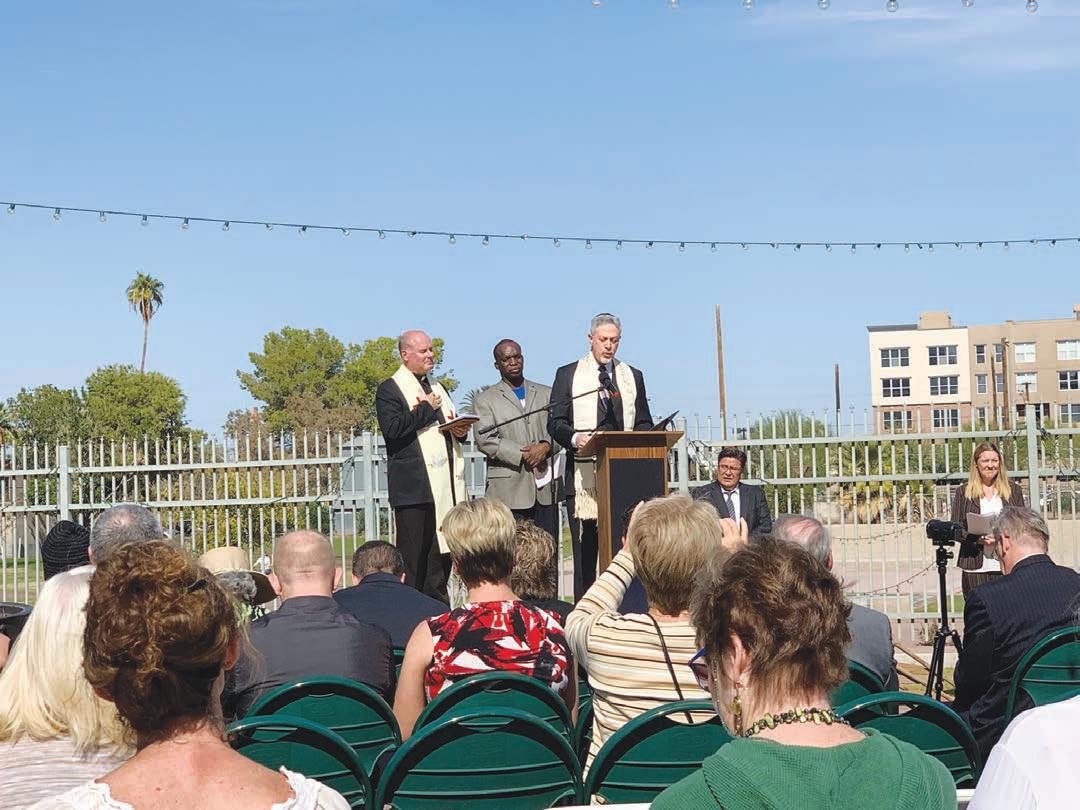
The Jewish Community Foundation of Greater Phoenix and the Arizona Community Foundation hosted a tax and legal seminar at the Scottsdale Resort at McCormick Ranch. Attendees included Samuel Donaldson, Teresa Coin, Kimberly Kur, Deborah Miller and Richard Kasper.


Shirley Pinczewski with a copy of the Jewish News in London, at the Edgware station on the northern tube line. PHOTO COURTESY OF SHIRLEY PINCZEWSKI
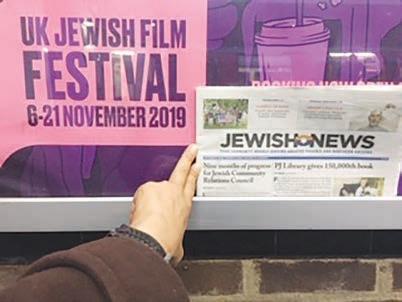
A group from Scottsdale and Phoenix took a Road Scholar trip to Arkansas, where they visited the historic Arkansas State Capitol in Little Rock. The group includes, from left to right: Lon Taubman, Judy Cooper, Jim Andrews, Susan Sacks, Susan Sendrow, Terry Taubman, Larry and Nancy Moffitt, Mark Sendrow and Rick Cooper.

Jeri Portnoy, Linda Zell, Roz Rappaport, Marjie Simon, Yetta Gettleman, Phyllis James and Annette Frankel went on a cruise together and took this picture during a stop in the Muir Woods.

Valley Beit Midrash presented “Letters from the Dead: Three Ancient Texts Discovered by Archaeologists,” a lecture by professor Ziony Zevit hosted at Temple Chai on Thursday, Oct. 24.
Two seasoned professionals in finance and law recently joined the Jewish Family & Children’s Service board of directors.
Marc Giannone, a partner and wealth management advisor for Eaton Cambridge, Inc., joins the board with more than 10 years of experience in financial planning and wealth management. Giannone is also the city initiatives lead for Generous Giving and the committee chair for the metro Phoenix chapter of Young Life.

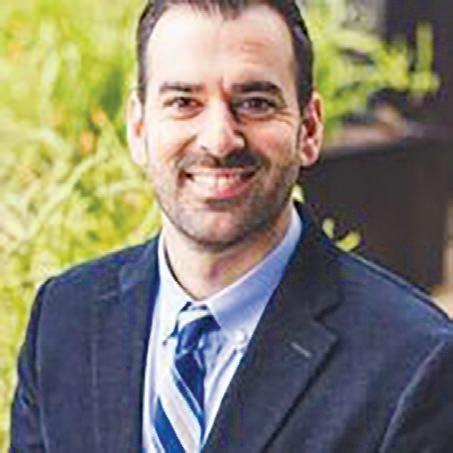
Edward Ober is a legal industry veteran with 40 years of experience, most recently a managing partner of Ober Pekas Ronstadt, a law firm focusing on disability benefits cases. Ober also has experience serving on the boards of ASU Hillel, the Jewish Federation of Greater Phoenix, the Arizona Center for Disability Law, Beth El Congregation and the Arizona Center for Law and Public Interest.
“We are pleased to welcome Marc and Ed to the board of directors,” said JFCS President and CEO Dr. Lorrie Henderson. “As highly respected professionals with extensive experience in their respective fields, we look forward to their expert engagement and assistance in helping position JFCS for a successful future.”
BBYO hires Tess Terry as associate regional director
Tess Terry is now the associate regional director of the BBYO Mountain Region. As associate regional director, Terry engages Jewish teenagers with BBYO events and programming in the Greater Phoenix area and oversees projects led by volunteer advisors. Her previous experience includes positions at the Jewish Federation of Greater Phoenix, the Staenberg-Loup Jewish Community Center in Denver and Congregation Anshei Israel in Tucson.
“Tess felt like a great fit from the beginning,” said Jeff Hast, senior regional director of the BBYO Mountain Region. “She brings a lot of the relationships that she’s built in the Phoenix area, and so far she’s been a hit with the teens. I can’t wait to see what she’ll accomplish.”
On Oct. 29, the Arizona Israel Technology Alliance announced a formal partnership agreement with the Binational Industrial Research and Development Foundation in the state of Arizona.
“The mission of the BIRD Foundation is something that syncs perfectly with the work we’re currently doing,” said Leib Bolel, president and CEO of the Arizona Israel Technology Alliance. “By creating joint ventures between Arizona and Israelibased companies, we will continue to build Arizona’s tech hub and bolster its ability to compete on the global stage.”
AITA is a resource on collaborative initiatives for companies and organizations in Arizona and Israel, with the purpose of increasing and supporting bilateral trade and investment. The BIRD Foundation promotes collaboration between U.S. and Israeli companies in various technology fields. The foundation funds up to 50% of the combined research and development budget for collaborative projects, up to $1 million per project. JN
Grayson Asher Seldin becomes a bar mitzvah on Nov. 30, 2019, at Congregation Beth Israel. He is the son of Beth and Scott Seldin of Paradise Valley.
Grandparents are John Hook of Kansasville, Wisconsin and the late Alice Hook; and Millard Seldin of Paradise Valley and Omaha, Nebraska and the late Beverly Seldin.
For his mitzvah project, Grayson volunteered at several organizations through Boys Team Charity.

A student at Cocopah Middle School, Grayson enjoys playing basketball and Xbox Sports.

David Hayden Sypes becomes a bar mitzvah on Nov. 16, 2019, at Congregation Beth Israel. He is the son of Karyn and Michael Sypes of Phoenix.
Grandparents are Eileen and Norman Schwartz of Chandler; and Rochelle and Stephen Sypes of Gambrills, Maryland. For his mitzvah project, David did fundraising for the Phoenix Herpetological Sanctuary.
A student at North Phoenix Preparatory Academy, David enjoys herpetology, origami, reading, cooking, arts and crafts and photography. Mila Wren Singer was born on Oct. 25, 2019, in Gilbert. She is the daughter of Morgan and Aaron Singer of Gilbert.

Grandparents are Ellen and Lee Eisinberg of Phoenix; and Shari Singer of Sacramento, California and the late David Singer. Greatgrandparents are Judy and Bobby Singer of Las Vegas, Nevada, and the late Jerry Singer. Mila has two siblings, 8-year-old twins Aidan and Ethan Singer.
Lynn and Mike Barinbaum of Scottsdale announce the engagement of their son, Adam Lerner of Scottsdale, to Jessica Weil, also of Scottsdale.

Parents of the bride-to-be are Marcie Weil and the late John Weil. Parents of the groom-to-be are Lynn and Mike Barinbaum and the late Paul Lerner.
Jessica graduated from the University of Arizona in 2005 and works as an account executive for Epionce.
Adam graduated from the USC Gould School of Law in 2007 and is senior corporate counsel with Accumen.
The wedding will take place on Nov. 7, 2020, in Phoenix. JN
Phyllis E. Anatole passed away peacefully on Oct. 31, 2019, at the age of 87. She leaves behind children Michael Anatole and Ellen Anatole; daughter and son-in-law Elana and Jordan Levine; grandchildren Kyrian and Rowyn Levine; and son and daughter-in-law Jesse and Amanda Anatole.
Phyllis’ motto was, “I love fun,” and she most certainly did. She was a devoted wife to Ronald M. Anatole, zichrono liv’racha. She overcame every obstacle life presented with grace and a positive attitude that was an integral part of her being. She had a sharp, dry wit and an ever-present smile. She was a Woman of Valor who loved her family and changed all of their lives to the better. She was blessed with strength, and blessed all who knew her with graciousness and kindness.
Memorials will be private.
Robert (Bob) Glick, 73, passed away peacefully Nov. 1, 2019, in Scottsdale, Arizona. Bob was born in Brooklyn, New York, on July 5, 1946, to William Bernard Glick and Mildred Reisman Glick. He grew up in Hasbrouck Heights, New Jersey, and graduated from Hasbrouck Heights High School.

Bob held a BSEE degree from Newark College of Engineering (now New Jersey Institute of Technology) and was elected to Eta Kappa Nu, the electrical engineering honor society. Bob worked for over 30 years as an electrical engineer at Motorola, much of that time as a project supervisor. He was a life member of the Institute of Electrical and Electronic Engineers. Bob also served two years in the U.S. Army as an electrical engineer at Ft. Huachuca, Arizona. In retirement, Bob became a genealogist, spending several years researching his family’s ancestry. He was also a lifelong fan of baseball, especially of the Brooklyn, now the Los Angeles, Dodgers. Bob was a kind-hearted and generous man, who supported his synagogue and who gave selflessly to many charities.
Bob is preceded in death by his parents. He is survived by his sister, Linda Glick Saperstein; his brother-in-law, Brant Saperstein; his brother, Brian Glick; his sister-in-law, Diane Glick; and his nephew, David Glick.



Bob’s family wishes to express its deep appreciation to Bloomfield House, located in Scottsdale, Arizona, and to Hospice of the Valley, for the compassionate care and comfort they provided Bob. In memory of Bob Glick, the family requests that donations be made to the Alzheimer’s Association. Information and donation instructions can be found online at alz.org.

It is with great sadness that our family announces the peaceful passing of our gentle, giving and funny father and grandpa, Harlan Jay Crossman. He was born in Brooklyn, New York, in 1941 and in his early years, his proud memories were of riding Ruth Bader’s (Ginsburg) bicycle and of taking the subway to attend Brooklyn Dodgers’ games with his brother, Steve. In 1947, his family moved to Albuquerque, New Mexico. He studied at the University of New Mexico both as an undergrad and for law school. He also studied at Menlo Park College, where he had a football scholarship. It was at UNM where he met the love of his life, Gayla, studying in the law library and they married in 1964. Their daughters, Monica and Avery, were born in 1965 and 1967.
In 1968, they moved to Arizona so that he could work as a law clerk for the Bureau of ndian ffairs in indow oc . His first position as a lawyer was for the tate Compensation Fund in Phoenix where he learned to love workers’ compensation law. He quickly realized that he wanted to represent the injured worker, so he started his own practice in 1972. He excelled in this specialization, becoming one of the first state bar certified wor ers’ compensation specialists and only practicin workers’ compensation for over 50 years. It was with great pride that he welcomed his daughter, Avery, into his practice in 1994 and they became partners.
His family was his first lo e and he tau ht his dau hters his lo e of fishin , which they often did as a family at their cabin in Colorado. His later loves included traveling and horse racing and he was often seen at the tracks rooting on his own horse, or venturing to Australia or Argentina with his wife, Gayla. He was thrilled to include his son in law, ti , to the family as the son he ne er had. hen his twin randchildren, Erlend and Emilia, were born, it was obvious that he was most content surrounded by his loving family. His presence was comforting to those around him, and his sense of humor, kindness and warmth will be forever missed but never forgotten.
Services were held Thursday, Nov. 14, at Temple Solel. Donations may be made to Home Fur Good Animal Rescue, 10220 N. 32nd St., Phoenix, AZ85028. May his memory be a blessing. Arrangements by Sinai Mortuary.
Cliff Jeffrey Petrovsky, 64, loving husband, father, son, brother and friend, passed away peacefully at home on Oct. 26, 2019, after battling a long illness. Born Aug. 18, 1955, Cliff was born in Memphis, Tennessee, to Bernice and Seymour Petrovsky. He later moved with his family to Scottsdale, Arizona, where he attended Madison Meadows Elementary School, Central High School and Arizona State University.
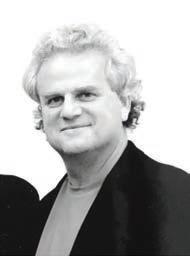

Cliff and his family moved to Prescott, Arizona, in 2000. He immersed himself in the mountains and deserts of his beloved Arizona, but his unlimited love for those around him was his most enduring characteristic. He has left an enormous void in the lives of those who knew and loved him. Cliff was highly respected throughout his 38 years of work as a private investigator. A founding member of Temple B’rith Shalom in Prescott, Cliff was instrumental in ensuring that the Prescott community had a place of worship. His involvement in retail development in Prescott contributed to the revitalization of downtown. Over the years, Cliff served as board president of Primavera School, president of Prescott Downtown Partnership; he also served on Prescott’s Tourism Advisory Council and the Jewish Community Foundation of Greater Prescott.
Cliff is survived by his devoted wife Ann, daughter Bailee, father Seymour Petrovsky, siblings Sherry Saper, Fred (Amy) Petrovsky, Adam (Heather) Petrovsky, and nieces and nephews Travis Saper, Michael Saper, Ryan Saper, Mara (Anthony) Jastrzembski, Brian Petrovsky, Rayna Petrovsky, Bradley Petrovsky, Reese Petrovsky, and godson Grayson Uhler. Cliff was preceded in death by his mother, Bernice Silverman Petrovsky, grandparents Israel and Ruth Petrovsky, and Bernard and Julia Silverman. Graveside funeral services were held on Tuesday, Oct. 29 , 2019, at Green Acres Cemetery in Scottsdale, Arizona. Arrangements were made by Sinai Mortuary. Contributions in Cliff’s memory may be made to Desert Hills Food Bank, Cave Creek Arizona and Pardes Jewish Day School, Scottsdale, Arizona.
